

European
Nuclear Society
e-news
Issue 31: February 2011
This edition of ENS NEWS is a first. Never before has an edition been devoted to a single subject. You don’t need me to tell you how important the management of knowledge transfer from generation to generation, a high quality education and tailor-made training programmes - for both new and old employees - are for securing the future of the nuclear industry. So, I won’t. This bumper edition, which contains a record number of contributions, says it much more eloquently than I ever could.
In fact, we received so many contributions covering various aspects of the education and training debate, that we decided to first take those we received from corporate members and educational institutions and divide them up into two sections, each one with a slightly different focus. The first section features contributions that explore how the provision of on-going training for nuclear professionals instils and reinforces the safety culture that is a prerequisite for all nuclear facilities. The second one features contributions focusing more on the skills that are vital for developing tomorrow’s leaders - those highly qualified, highly trained and talented individuals who will drive our industry forward to the next level, thereby ensuring that the nuclear revival is both sustained and sustainable.
ENS NEWS then focuses on what ENS member societies are doing to promote higher education and training, with the emphasis on cutting edge research into the nuclear science and technology of today and tomorrow.
Then the spotlight switches from those providing the education and training to the students and trainees themselves. We take an inside look at what talented and ambitious young people, on the threshold of a career in the nuclear sector, think about the education and training they have received or are receiving. The ENS NEWS team went out and about interviewing students and young professionals to find out first-hand what really motivates them and what their hopes and expectations are. Clearly, with young talented and focused individuals like these, supported by a nuclear science community that is committed to working together and investing continually in education and training, the future of our industry seems bright. Do you agree?
I hope you enjoy this special edition of ENS NEWS, the first of the new decade, and find it an education in itself.
|
http://www.euronuclear.org/e-news/e-news-31/presidents-contribution.htm


The greatest risk to the future of the nuclear industry today is a systemic failure to pass on to subsequent generations the vital knowledge that has been acquired over the decades. Since the Chernobyl catastrophe investment in automatic monitoring and safety control systems has been increasing continuously. Unfortunately, the same cannot be said for investment in education and training. This failure prevented an optimal transfer of the knowledge that is the life-blood of our industry. This special edition of ENS NEWS focuses on this crucial subject and provides an overview of some of the efforts that are being made to invest more in education and training and thereby secure a bright future for the nuclear industry.
When it comes to education and training, training people to become highly-qualified plant operators has always been - and remains today - a top priority. To become a qualified plant operator requires a very high level of education in nuclear physics and technology. This can be obtained from a broad range of academic and research institutions operating at both a national and international level. Competence in nuclear physics requires a sound basic competence in mathematics and a good analytical mind. Furthermore, trainee plant operators need to acquire a lot of technical knowledge and specialised skills, which they get from intensive training courses. Without doubt this kind of education faces a considerable challenge when it comes to attracting young people today. Their perception of how attractive a career in nuclear physics or engineering is still leaves a lot to be desired. Unfortunately, a decrease in the number of employees in the nuclear sector and the “ageing” of the current generation of experts seems to be a serious problem in many countries. I’m afraid that, in my view, associating nuclear with well-accepted contemporary buzzwords like “bio” and “nano,” will not help to make a career in nuclear seem more attractive to young people.
And yet, as this special edition of ENS NEWS shows, the nuclear community is conscious of the need to better manage that knowledge. Industry and academia are increasingly working in partnership to offer current and prospective students a broader range of qualifications and training. Students can obtain a bachelor’s degree (BSc) or graduate qualifications, such as an MSc or a PhD. They can also complete specialised training courses as part of a continuous education programme, carry out work on research projects, follow e-learning modules, learn to create databases, and take part in workshops, seminars and simulation exercises. Provided there is a shared interest from both employer and employee (or future employee), all methods of learning and training are valuable.
High expectations and, therefore, a great burden of responsibility rest upon the shoulders of university professors teaching nuclear sciences. Universities do not just provide a first-class education, but also help to attract students to the nuclear industry. This education provides a basis for learning about the safety culture of a nuclear power plant and helps enhance public acceptance of the nuclear industry. Readers at a university (professors, senior lecturers etc.) can stimulate students’ interest in nuclear physics, or at the very least, address their fears regarding certain nuclear issues. Initial contacts and first impressions are very important. At the same time universities can make an optimal selection of students. Students are completely free to choose whether or not to study the nuclear option. The problem is, though, that the number choosing it is limited. A university education is not simply a means of acquiring knowledge. It forms people’s minds and attitudes for the rest of their lives. Theoretical and applied knowledge, together with the development of a professional and consistent approach, help instil and promote that vital safety culture.
Lectures and seminars are also open to the general public, which can help to enhance the public image of this academic field. This investment in education is primarily aimed at the next generation. During their discussions with students teachers can provide professional guidance and orientation, giving advice based on their abilities, needs and interests.
Good teaching encourages the personal and academic development of students and helps to shape their personality. Graduates have to learn to take full responsibility for the kind of academic education they decide to pursue. They are the future of the nuclear industry and this decision is fundamental to their personal fulfilment and to the future prosperity of the industry.
http://www.euronuclear.org/e-news/e-news-31/listening.htm


Since this issue of ENS NEWS is devoted to nuclear education, I decided to dedicate my column to a topic that would follow its general theme. My usual concern being the investigation of the particularities of the nuclear debate, it was only natural to ask myself whether nuclear education could affect it. Since the advocacy of nuclear energy lies mainly in the hands of representatives of the nuclear industry1, it would not be surprising if the way they were educated had an influence on the way they argue in favour of it.
The first observation that can be made is that the contents of courses related to nuclear sciences have significantly evolved over time. Thirty years ago, books on nuclear engineering, to mention the area I know best, were only about reactor physics: the transport equation, thermal-hydraulics, reactor kinetics and other similar core2 issues. Lots of equations and little space for matters not directly related to the workings of reactors. Today, one only has to look at the table of contents of modern textbooks to see that many other issues are now part of the standard curriculum. The nuclear fuel cycle, waste disposal, terrorism, proliferation, biological effects of radiation, once considered as peripheral to the main engineering concerns and therefore relegated to specialized monographs, are now included as a matter of fact in introductory textbooks. Such evolution is to be welcomed. Nuclear power generation has many implications for society at large, which is why they should be tackled early on, not as afterthoughts once the more prestigious scientific chapters have been completed. Does this change of emphasis prepare nuclear scientists to engage more effectively with stakeholders of nuclear projects? In a way, yes: being led earlier to take a broader view of nuclear power generation leads to a better understanding of the needs and concerns of end-users, hence to better engineering decisions.
The second observation is that, despite the broader scope of modern textbooks, not everything has changed in nuclear education. A moment of reflexion is enough to realize that some permanent features of any nuclear curriculum will have an impact on the approach of nuclear scientists to debating. Four of them spring to mind:
Being continually faced with physical systems exhibiting numerous feedback loops so that the behaviour of such systems is determined by the combination of conflicting influences. In such cases, no qualitative reasoning can suffice to give an idea of what will happen to the system under a given set of circumstances; quantitative analysis is indispensable to take proper account of the respective orders of magnitude of the factors at play.
Being exposed to the pervading need for engineering compromises between conflicting objectives: we are not living in an ideal world where all considerations align themselves neatly to point to a single, ideal solution beating all others on every count. We live in a messy world where optimizing means consciously accepting some drawbacks because it is not possible to avoid all of them at the same time.
Needless to say, the above-mentioned habits cannot be properly exercised without exhibiting at the same time an urge for accuracy both when reasoning and when handling the figures.
Numeracy: more than many other scientific disciplines, nuclear sciences require juggling quantities ranging from the very small to the very big, both ends falling outside the bounds of everyday experience. Nuclear scientists develop a habit of dealing with such quantities that certainly exceeds the needs of most other people.
One might be tempted to conclude that having acquired such scientific discipline would give them an advantage in the debate. After all, it has been repeatedly observed that the critics of nuclear energy usually favour less rigorous approaches and avoid quantitative considerations as much as they can. Unfortunately, the technical superiority of the former does not translate into a practical one over the latter, far from it. When engaging in the debate, nuclear specialists end up being hampered by their training in two ways3:
They all too easily come out as confusing. Reality is rarely simple. Explaining the outcome of physical phenomena involving numerous factors requires lots of ifs and buts. No wonder that nuclear scientists, trained to pay all due respect to accuracy, struggle occasionally to explain a point at issue in simple terms. They end up being no match to people who promote their views with easy one-liners obtained precisely at the expense of accuracy.
They are often accused of being arrogant. After a bit of introspection, my conclusion is that this accusation is a misrepresentation, but that their complaint is not completely unfounded. What is perceived by the critics of nuclear energy is, I guess, not so much arrogance as irritation. And room for irritation there is: after so much time spent learning how to define compromises between conflicting requirements, it is only too human to feel ruffled by people who assert that your solution is faulty on each and every count and that theirs combines all possible advantages. There are simply no examples of such situations in real life: all coins have two sides and it does not take a university degree in nuclear engineering to know that. Arguing with people who believe in drawback-free solutions can tax the patience of those who know otherwise.
Should then anything be changed in the way nuclear scientists are trained? Of course not. Nuclear education is still about forming able specialists, not skilful communicators. The more sensible decision, already made by the nuclear industry several years ago, is to delegate the communication part to specialists while leaving the technical material in the hands of the specialists. This is a move that is not welcome by the anti-nuclear movements since it contributes mightily to leveling the playing field. In private discussions however, it is not a bad thing to bear in mind the way our education can influence our reactions and remember that patience is the key word: patience when having to delve into complex technical issues for the sake of non-specialists and patience when talking to believers in single-sided coins.
http://www.euronuclear.org/e-news/e-news-31/e+t-platform.htm

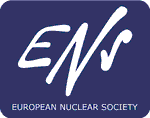
The European Nuclear Society (ENS) is the largest learned society for nuclear science, technology and industry in Europe. It reaches out to over 20,000 nuclear professionals in 22 countries in Europe, as well as in Israel. Nuclear education and training is a key issue for ENS members.
The nuclear sector is pulling out all the stops to meet one of the major challenges that it currently faces – to deliver optimal skills and provide top-quality experience for professionals at all levels in the nuclear industry. Several education and training programmes have been set up to maintain the current nuclear knowledge bank and to ensure that there are sufficient numbers of suitably qualified employees to sustain the industry in the future.
Education at university level, which is very resource intensive and requires long-term planning, has been a major focus in recent years. New courses have been designed and a lot of effort has been made to increase the quality and complementarity of existing courses. A range of educational networks has been established at both a national and European level.
At the same time, the nuclear industry has assumed responsibility for developing and increasing its own educational and training capabilities. In addition to in-house training programmes, it offers others based on collaborative ventures with educational institutions. These allow for a combination of on-the-job training and periods of study for employees.

The exchange of experience and expertise, the sharing of capabilities and resources and networking between stakeholders are all crucial to the development of an efficient education and training offer – one that is geared to providing the highly-skilled workforce that a dynamic and fast-evolving industry demands.
With that in mind, ENS established the Education and Training (E&T) Platform. It provides an overview of currently available university courses, as well as training and education programmes offered by industry and other institutions. The E&T Platform places special emphasis on collaboration between stakeholders, on the sharing of available infrastructure and resources and on the promotion of existing networks.
The Platform is closely linked to ENS’ biannual conference on education and training, NESTet, and will continue to evolve thanks to the input it receives from the conference. Another significant contribution to the Platform is made by ENS’ members in 23 countries and by its 60-strong corporate membership.
Additionally, ENS is enlarging its scope for co-operation with the European Human Resources Observatory for the Nuclear Energy Sector (EHRO-N), in order to create and maintain an up-to-date databank of information about education and training opportunities.
In the near future the Platform, with support of Young Generation Network (YGN), will design a “Career Opportunities” portal, where young highly-qualified professionals will be able to upload their curriculum vitae. This will, in turn, give ENS corporate members the opportunity to identify and recruit top quality nuclear employees.
http://www.euronuclear.org/e-news/e-news-31/nestet2011.htm


The first ENS conference dedicated to nuclear education and training, called NESTet, took place in May 2008 in Budapest, Hungary. It attracted over 130 participants from 29 countries.
Nestet 2011 will take place from 15 – 18 May 2011 in Prague. It is planned as a back-to-back event with the European Nuclear Young Generation Forum (ENYGF) which will take place from 17. – 22.5.2011 at the same venue.
NESTet is designed to facilitate an exchange of information and the sharing of best practice. It is an important networking opportunity for better co-ordination and collaboration between different stakeholders in nuclear education.
The NESTet Programme will feature the following topics:
What are the needs with regard to nuclear education and training? Representatives from industry, regulators, safety authorities and research institutions will provide insight on skills and profiles required to ensure an efficiently and safely performing nuclear sector.
What are the answers that help to close the gap? This is all about sharing best practice and examples of co-operation between different stakeholders and about training and education programmes that are able to cover needs.
Where are efforts on harmonisation needed? Harmonisation is part of effective strategies for nuclear education and training. A range of well-known initiatives have been launched especially at university level and many of them have been discussed at NESTet 2008. Other areas still need attention and will be presented at this edition of NESTet.
How to increase the motivation of people to choose a career in nuclear? How to attract young people to the nuclear sector? How to encourage skilled professionals with general engineering or project management competence to join the nuclear sector? What do stakeholders offer to different levels from undergraduate to PdD and how do they integrate education and training in a career path?
What is the situation with regard to infrastructure and tools for nuclear education and training? This session will look at questions like: How can we overcome bottlenecks where the required infrastructure is not available in sufficient quantity and quality? How can collaboration, sharing of facilities and new emerging tools ensure the provision of the required infrastructure? What is the role and importance of experimental facilities? How can we use new technologies for education and training (e-learning, simulators, virtual engineering…)?
NESTet 2011 Gold Sponsors: |
|
http://www.euronuclear.org/e-news/e-news-31/tvo.htm

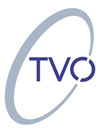
TVO (Teollisuuden Voima Oyj) is a non-listed public company founded in 1969 to produce electricity for its shareholders at cost price. The company owns and operates two nuclear power plant units, Olkiluoto 1 and Olkiluoto 2 (OL1 and OL2) at Olkiluoto in Eurajoki. TVO is also a shareholder in the Meri-Pori coal-fired power plant. A third nuclear power plant unit is under construction at Olkiluoto (OL3). In July 2010, the Parliament ratified the favourable decision-in-principle the Finnish Government made concerning the Company's application to construct its fourth nuclear power plant unit Olkiluoto 4 (OL4). The Olkiluoto power plant has been running for more than 30 years with an extremely high degree of reliability. The capacity factors for both units have been at the top of the league internationally for nearly the entire history of the power plant. Olkiluoto 1 today has a net output of 885 MW and Olkiluoto 2 860 MW, and together they produce slightly more than 16% of all the electricity consumed in Finland.
Competent personnel are the foundation of responsible nuclear-generated electricity production and training is provided for all categories of personnel. At the moment, TVO is focusing on the OL3 project, safety culture improvement (organisational learning and the “zero tolerance” approach), advanced knowledge in nuclear power and power plant technology. TVO has hired many new employees in recent years. At the end of 2009, TVO employees totalled almost 800. Employment relationships at TVO are long and personnel turnover is minimal. The average period of employment for our personnel is 15 years. TVO employs many Finnish pioneers in the nuclear field. As a result of the OL3 project we have hired new pioneers and are ensuring the preservation of strong know-how for the future.
TVO´s staff has acquired unique know-how with regards to the development of nuclear power plant infrastructure, the successful operation of plant units, their maintenance and modernisation and the planning and construction of new plant units. Personnel turnover at Olkiluoto has been minimal, but in the years to come we will be faced with a more and more transitional situation in response to retirements coming onboard. At TVO we shall be continuously transferring the know-how and plant-related skills that we have acquired to new skilled personnel. About 40% of TVO´s staff has been employed by the company for over 20 years. During the last five years, TVO has recruited almost 300 new people for various jobs. The new ones working in the OL3 project are being trained for the tasks connected with the forthcoming operations taking place during the construction and initialisation stages.
Every new TVO employee is required to undergo site entry training, induction training and job training relevant to his or her position. With induction training, employees are given basic information about radiation; environmental, fire and occupational safety and the work procedures at TVO and the power plant units. Between 2005 and 2010 more than 20,000 people received site induction training. Staff members that are motivated by their jobs, professionally skilled and competent ensure the safe operation of a nuclear power plant. TVO is achieving a high level of expertise by means of, for example, a general know-how survey, job-specific training requirements and programmes, job rotation and orientation programmes. Training specialists plan, along with supervisors, suitable orientation for each TVO employee and put together a training and development plan. With the management of know-how we apply a job-specific method in which we have detailed the minimum competence requirements, together with training plans, for an office group performing the same function. Our method is an application of the SAT (Systematic Approach to Training) method developed by the International Atomic Energy Agency (IAEA).
Every year TVO prepares the company’s training programme, which is based on the job-specific training requirements coming from different divisions of the company, while taking into account the management’s development-based targets for personnel and other current training needs. The programme functions by providing systematic support for the maintenance and development of personnel know-how and competence. The maintenance of personnel competence and its upgrading are ensured by the provision of further training and on-the-job training. Operator training includes both instruction in theory and training on a simulator that exactly mimics the functions of a power plant unit. Training for the operators of the new OL3 unit has already begun. The total number of training days for employees at Olkiluoto in 2009 was about 9000 days. On average, each TVO employee spends 12.5 days training a year.
In Finland, basic professional training courses on nuclear safety have been organised since 2002. Finnish nuclear organisations have re-evaluated the manpower situation and established an organising committee to develop and organise the necessary basic post-graduate professional training of new recruits and staff members. The training is tailored to suit the priority needs of the new nuclear power plant project, but it also aims to provide, in the long-term, a new generation of nuclear experts to replace the generation that will retire within the next ten years. The organising committee includes representatives of the following organisations: the Radiation and Nuclear Safety Authority (STUK); nuclear power utilities TVO and Fortum; the Technical Research Centre of Finland, VTT; Lappeenranta (LUT) and Helsinki Universities of Technology (TKK, now Aalto University) and the Ministry of Employment and the Economy (TEM). All the lecturers are provided by these organisations, which also share all the training positions in a representative way. The training is given in Finnish. Although the training is partly based on a similar course developed by the IAEA, it has been adapted to suit Finnish conditions. A large amount of the material is completely new and also contains parts tailored to suit the future needs related to increasing generation capacity and the new Gen III type reactors. By 2010, around 500 persons will have participated in the training courses. Course n° 8, that includes 65 students, is still on-going. The duration of this course is 6 weeks, with 24 full training days.
Jaana Isotalo
Head of general training Human Resources / General Training
Teollisuuden Voima Oyj
Olkiluoto
27160 Eurajoki
Tel. +358 50-327 6609
http://www.euronuclear.org/e-news/e-news-31/tecnatom.htm

Tecnatom is a Spanish engineering company that has provided services to the nuclear industry since its creation, in 1957. The company’s main activity centres around the delivery of inspection and component structural integrity services, the training of operational personnel by means of full-scope simulators and engineering services in support of plant operation. Over the last decade, Tecnatom has diversified the services and products it offers in the international marketplace, targeting other industrial sectors such as aeronautics, the petrochemical industry, etc. Nowadays, Tecnatom has become a global leader in delivering advanced engineering services. It operates in over 30 countries and employs more than 750 people providing professional services to leading customers in different markets. The company supplies services and products with a high technological component, which it continuously improves in order to adapt to the needs and requirements of both clients and markets.
One of Tecnatom’s main activities of is to provide technical support for the safe, reliable and efficient operation of complex industrial facilities. For this, Tecnatom Safety, Operation & Training Services Department designs, organises and manages Training Centres that support the improvement of human performance.
The level of qualification of nuclear power plant personnel has evolved very rapidly in recent years, primarily driven by the “generational change-over” that has occurred at Spanish plants. The basis for this change has been knowledge transfer between experienced and newly-hired personnel, the reinforcement of safety culture, systematic training programmes specifically designed to ensure the necessary expertise required for different plant jobs, and the application of advances in information and communication technologies to training provision.
In order to support Spanish nuclear power plants, Tecnatom offers an integral training programme. Its ultimate objective is to have reliable personnel working in the plant who are highly qualified and competent at their job. The programme includes the recruitment, selection and training of candidates. A careful process of recruitment and selection is very important because starting with quality raw materials is a key factor for success.
Tecnatom training services include the following:
• The design, organisation and management of Training Centres
• The design, development and supply of training simulators
• The development of advanced training tools
• Operator training and re-qualification
• Maintenance training
• Engineering and technical assistance training
• Recruitment and personnel selection
• E-learning
More than 500 Training Units and a team of highly qualified instructors guarantee training based on practical reality and adapted to meet the specific requirements of each client.
Tecnatom training services in nuclear power plants are addressed to different categories of personnel, such as licensed operation personnel, licensed radiological protection experts, non-licensed personnel and sub-contractors. The training programmes for each category have been designed and developed in accordance with national requirements and international qualification standards. Because Tecnatom believes that a key factor in improving performance is the human competence factor, a systematic approach to training (SAT) methodology has been implemented.
Competence means the sum total of knowledge, skills and aptitudes acquired which, obtained by means of training and the accumulation of experience, lead to excellent performance. So, development training plans focus on the knowledge, skills and aptitudes that every worker must have to perform his/her work properly and improve his/her performance. As a result, the plants have training programmes that are tailor-made to suit practically every job specification and they all have a similar structure: common general training, specific occupational training and on-the-job training.
In order to raise the quality standards of its training services, Tecnatom collaborates with major international nuclear training organisations, such as the Institute of Nuclear Operations (INPO), the World Association of Nuclear Operators (WANO) and the International Atomic Energy Agency (IAEA). Regarding this, Tecnatom has established an agreement with INPO for the transfer of knowledge and methodology that includes training courses, benchmarking activities and technical support services.
With regards to the training scenarios developed by Tecnatom it’s worth emphasising the use of the following tools:
• Full-scope simulators
• Interactive graphic simulators
• Hydraulic loop
• Human factor simulator
Tecnatom is a simulator manufacturer and is continually striving to improve and broaden the range of tools it has developed for trainees. Tecnatom has developed advanced teaching resources like full-scope simulators - an essential training resource for operational and engineering functions at nuclear facilities. Nowadays, in Tecnatom there is one full-scope simulator replica for the control room of every Spanish nuclear power plant that offers training for control room personnel. In addition to the full-scope simulators, Tecnatom has developed interactive graphic simulators, a pedagogical and analytical tool with active monitors that provides information about the process and make it possible to intervene. Every Spanish nuclear power plant has an interactive graphic simulator that is used for different training courses.
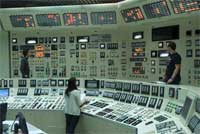 |
With regards to non-licensed personnel training there has been a continuous upgrade of didactic material, tools and equipment. In addition to providing traditional training in a workshop environment, Tecnatom has also designed a hydraulic loop to recreate a dynamic training environment. This has been used regularly, and its use has increased as new training |
needs have arisen. The initial development investment has reaped rewards, as early training provision has been successfully completed. This in turn has supported the development of new capabilities and improvements in the quality of the training provided.
Training nuclear power plant personnel to acquire non-technical competences has been a permanent feature of Tecnatom training programmes since 1994. What began as a complement to the technical training of control rooms teams has progressively become an essential component of the overall training offer, not only for this category of staff, but also for all the personnel working in nuclear facilities.
Training in operational-related human factors has gradually been enhanced. This has included training in human error prevention techniques, active participation in safety culture development programmes and management training for the personnel
responsible for the plants. Training also covers the reinforcement of safe operational procedures in the control room and other programmes intended to teach students human intervention strategies and encourage them to reflect upon their importance to the safe operation of nuclear facilities. Tecnatom has developed a human factors simulator to check the effectiveness of using a series of tools to improve both individual and team-based human performance. |
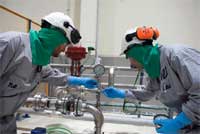 |
The large amount of didactic material and project documentation included in nuclear power plant training manuals makes it difficult for students to rapidly access information during the final phases of their training. In order to improve this, Tecnatom has applied advances in information and communication technologies to training. As a result, a new training tool for students and instructors has been implemented. It is based on a laptop with a notebook type interface, known as “tablet PC,” and has replaced 98 % of the documentation that was previously paper-based.
 |
This new tool has introduced major changes in the learning process, including rapid, interactive access to all information and knowledge, the incorporation of multimedia content and virtual control room simulation. Students have all the information available to them and can make notes using a digital notebook. They can also provide summaries by using writing recognition, or access multimedia content related to the courses. Thanks to the portable nature of the equipment this can be done in an easy |
|---|
way, while working in a natural, ergonomic position - any time, any place. International organisations like INPO and IAEA consider this way of delivering and managing didactic material to be “good practice.”
Nuclear knowledge is increasing as time goes by, thanks to research and experience, and it is very important to maintain and transfer it from generation to generation. Also worthy of mention here are the efforts being made to improve and complete knowledge management and transfer, as well as to upgrade the training tools that have been developed.
Within the context of the nuclear renaissance, Tecnatom has designed a “nuclearisation” training programme for new power plants.
As far as the running of a nuclear power plant is concerned, human performance with minimum error improves safety, availability and economic efficiency. And this is only possible with an excellent training provision. As training is the improvement of strategic tools used to promote excellence in human performance, Tecnatom will continue to do all it can to improve its training services in order to offer its clients training solutions in tune with their needs.
http://www.euronuclear.org/e-news/e-news-31/vattenfall.htm

Competence is often described as a chain, and rightly so. A chain is only as strong as its weakest link, and this holds true also when it comes to safety and performance in the nuclear power sector. A high-level of safety and performance must be maintained by all categories of staff. Therefore, we need a continuous supply chain of people of the highest possible level of competence, starting with an initial influx from the educational system, and continuing throughout all stages of a staff member’s competence development. Rather than present an exhaustive list of all ongoing activities, I will instead provide a representative illustration of Vattenfall’s competence management training provision, which takes place at all levels. Competence is not just achieved through training. Even more important is the application of knowledge in one’s daily work. This report, however, focuses on training and outlines four important components:
The Swedish Nuclear Technology Centre, which provides support for universities
The Nuclear Safety and Training Centre for the training of operational staff
The European Nuclear Energy Leadership Academy for the development of leaders
The Nordic Safety Management Institute, which provides the training for managers of all levels up to CEO level
About 20 years ago, the situation with regards to nuclear engineering education in Sweden was characterised by a downward curve, with only a few professors (all close to retirement) and a few students. This fact triggered a jointly organised project in which the nuclear industry joined forces with government inspectors to coordinate the sponsoring of education and research at three Swedish universities. The Swedish Nuclear Technology Centre (www.swedishnuclear.se), and other similar educational initiatives, have gradually and dramatically improved the situation, resulting in a rapidly increasing enrolment in nuclear education programmes.
In short, Sweden has managed to generate spectacular change. Of the present 17 tenured scientists and teachers working at nuclear universities, 15 are aged between 35 and 50 years of age. Moreover, there is a large pool of younger talent in the form of PhD students and new post-doctoral students.
The training of staff at nuclear power plants is provided by the Nuclear Safety and Training Centre (the Swedish acronym is KSU), a company jointly owned by Sweden’s nuclear power operators. Simulators identical to the real control rooms operated at Sweden’s ten nuclear power reactors are used to provide training for operational staff. In addition, courses on virtually any aspect of nuclear power are also taught. The most advanced courses are taught by universities in collaboration with KSU. Since autumn 2010, KSU and Uppsala University have been collaborating on the provision of a bachelor’s degree programme in nuclear engineering.
Barsebäck NPP, which was taken out of operation a few years ago, has now got a new life as a training facility. There it is possible to practice operations with a real full-scale reactor and prepare staff well for, among other things, upcoming revision work. Such training can reduce the downtime, as well as reduce the doses of radioactivity to which staff are submitted during these revisions.
Six European companies, Vattenfall being the third largest of them, joined forces recently to establish a new academy for leadership development in the nuclear sector. The new institute, ENELA (www.enela.eu), has its seat in Munich, Germany, and offers two major training programmes. The ENELA Leadership Cycle (ELC) is intended for experienced staff ready to take on high-level leadership duties like that of a reactor manager, or higher. The programme consists of seven one-week modules, spread over eight months. The ENELA Management Programme (EMP) has a similar content, but is intended for talented young individuals with a few years of professional experience.
Nuclear power, being a multi-faceted industry, requires a broad understanding of many different aspects for it to perform successfully. This is particularly true for safety management. Matters that at first sight could seem to have little or no connection with safety could still be of great importance. For instance, centralised procurement procedures (to idea is to save money by getting better prices through bulk purchasing) can affect safety if the central team does not have sufficient understanding of the special needs that nuclear power plant operation has.
Another very topical issue is that of the importance of combining security and safety in an optimal way. Vattenfall’s first priority is safety and attention to safety management is a top priority. All high-level managers attend courses on safety management. These courses are based on a multi-disciplinary approach. Consequently, hydro and nuclear power joined forces to establish the Nordic Safety Management Institute, and the lecturers and case studies involved are taken from many different areas, including the civil aviation and oil refining industries. A recent highlight was a special training session organised when the present CEO took over the leadership of Vattenfall. In that course, the new CEO and several other members of the Executive Management Group spent several days on a nuclear safety management training course.
Vattenfall is committed to achieving a world class level of operational safety and nuclear power production by 2014. The actions described above represent part of the strategy that has been put in place to enable it to reach this goal.
Jan Blomgren
Vattenfall Senior Expert Nuclear Education
http://www.euronuclear.org/e-news/e-news-31/ksu.htm
Is it possible to train people to improve human performance? What is human performance and what is its connection to safety culture?
When we were given the task of creating the “Course in Safety Culture & Human Performance” these were the first questions we asked ourselves.
What are the answers? Unfortunately the first answer is no, you can’t train people to improve human performance. When you perform a job or a task, human performance is the combination of the behaviour and attitude you show while doing the work. Behaviour and attitude are something that you develop over many years under the influence of parents, friends, colleagues, life experiences, work environment, work conditions and so on. You could call it “everyday life learning.” You learn whether you like it or not and you don’t only learn good things. You might even learn things which, perhaps, result in bad behaviour.
So, we can’t train people to improve human performance, but what can we do in order to encourage it? Inspired by Chris Argyris (an expert in “single-loop” and “double-loop learning”) we created a one-week course designed to give participants exposure to different situations where attitude and behaviour can be observed and used as a basis for dialogue about what we can be learnt from it. Reflecting upon one’s experiences and communicating with each other were the tools we used to encourage the learning process.
To get as many perspectives as possible during a course we try to mix up the categories of participants taking part. For example, maintenance personnel from all three nuclear power plants in Sweden, electrical, mechanical and I/C personnel, juniors and seniors, craftsmen, engineers, managers and entrepreneurs, men and women all took part. The better the mix of participants you have, the better the results you achieve.
The course begins with different activities aimed at “establishing the group”. You won’t get a good dialogue with 10 to 15 people who haven’t met before. The participants will acquire a lot of experiences during the week, but we also want them to share experiences from their daily work. Each day starts with a time of reflection where experiences from the day before are discussed. This session is led by a facilitator.
At the end of the week participants are divided into a mechanical group, an electrical group and an I/C-group. Each group gets different jobs to do, which are done within the containment area. The scenario created is that the power plant has been started up again after an outage but because of a leaking steam valve it has had to shut down again. Before the start-up some jobs had to be done in the containment area. Different tasks were prepared in order to see how the maintenance personnel act. There was, for example, a job to be done with a pilot valve but the wrong valve had been tagged. Valves that should be closed (according to correct work procedure) were left open. Scaffolding covers the evacuation route. How do the personnel act? Do they notify the faults? Do they communicate with the control room? During this exercise we also observe how they allocate each kind of task to different members of the group, how they communicate between the different groups and how they cover open pipes to avoid foreign materials getting inside them.
Before the jobs start a pre-job briefing is given and after finishing their tasks a post-job debriefing is carried out. If something unplanned occurs personnel should use the STAR (Stop, Think, Act, Review) process. Self-checking and peer checking are other human performance tools that can be used.
The different jobs are quite easy to perform, but by putting them within a “minor fault” scenario, different situations can be simulated, assessed and discussed in order to learn from what the participants experienced. When something goes wrong we normally focus on a technical issue, but many times it’s all about human factors and human performance. After the one-week course we hope that participants have learned how to use this process of reflection and good communication as a tool to help them learn from different situations and experiences.
The practical and realistic methods that we used as a basis for this human performance and safety culture training helped us achieve a Good Practice rating following a 2009 OSART review.
As with all training you try to describe reality by using illustrations, photos, films, perhaps even mock-ups or simulations. The closer you get to reality the better. At Barsebäck NPP it is reality. To use a nuclear power plant for maintenance training is quite unique.
Training is based on task analysis made in collaboration with highly competent experts from Sweden’s nuclear power plants. The development of the course gives a possibility for an exchange of competences between experienced maintenance personnel and inexperienced staff – and all under strictly controlled circumstances. Since a lot of competent and experienced personnel are retiring there is an urgent need to transfer their knowledge to the next generation.
The technical courses focus on practical exercises by using systems, components and equipment in the facility. For example: disassembly and assembly of the reactor vessel before and after refuelling. The training is performed in a real environment led by experienced and skilled trainers. Students handle real components without any risk of effects on production or damage to the fuel.
The training takes place in the reactor halls at Barsebäck unit 1 and 2, without being influenced by any other activities and schedules. This provides a relaxed learning environment with space for reflection at different moments in the process. Even if it is a technical course you still have to make sure that there is time set aside to learn by reflecting upon and sharing experiences.
For political reasons Barsebäck NPP Unit 1 was shut down in 1999, and Unit 2 in 2005. During the lengthy period of political discussions it was considered - both in Barsebäck and at other NPPs - how Barsebäck might be used in a meaningful way after the shut-down.
Specifications for the provision of maintenance training were designed by a working group that represented Sweden’s NPPs. The participants also represented different technique disciplines (mechanical, electrical and I/C).
KSU (Kärnkraftsäkerhet och utbildning - or nuclear safety and training) was contacted in March 2007 and asked to develop and implement this training course. KSU was contacted because it is owned by the NPPs and was already running training courses for operational personnel.
The decision to start maintenance training at Barsebäck was taken at a KSU Board Meeting in May 2007.
The first recruits for the new organisation in Barsebäck were made in October 2007 and the first course was held in April 2008. The KSU unit working in this field is called Maintenance Training. Nowadays this unit (see below) also offers courses for field operators.
Maintenance training contributed to the achievement of Good Practice rating following an OSART review in February 2009 and another one in February 2010.
OSART stands for Operational Safety Review Team, an international team of experts that conduct reviews of operational safety performance at nuclear power plants.
We have developed and run Human Performance & Safety Culture courses. This course is the main reason why we achieved Good Practice rating following OSART reviews.
We completed the analysis, design and development of seven new courses, together with experts from the NPPs. We now also run these courses.
We have developed and run two courses for field operators (valves, pumps, heat exchangers and practical skills for field operators).
We run courses in plant knowledge management for different target groups.
We are in the process of developing a further 5 new courses.
The courses are residential courses. Breakfast, lunch and dinner are served in the power station’s dining room. The students stay in the 40 private rooms that have been renovated to hotel standards. There is the possibility for leisure time activities close by. The main reason for this residential solution is that we strive to achieve learning throughout the day - whenever the students are awake.
The Maintenance Training Unit is a unit of the Product Development Department of KSU. It is run by a manager, Jan Johansson, a training developer, five instructors and a ecretary/administrator. Other tutors/training personnel are recruited from Barsebäck NPP and from other Swedish NPPs, contractors and suppliers of equipment and components.
There is a Management Group that consists of Maintenance Department Managers from the NPPs. This Group decides upon strategic/policy questions concerning cooperation, activity plans and long-term development.
In the Training Board there are NPP representatives from the respective Maintenance Department and Human Resources Department. The Board decides upon training targets and competence requirements for the various elements of the training programmes provided.
There are four customer meetings at each NPP every year. Managers at unit and group levels from the Maintenance Department, together with people working in competence matters in the Maintenance and Human Resource Departments, take part in these meetings. The main subjects of these meetings are course requirements and the yearly plan.
Training is provided as a result of working together with experts from the NPPs and from consultant companies. We also work together with experts in course development and in course performance.
KSU has approximately 285 employees, with training units located in Barsebäck, Forsmark, Oskarshamn, Ringhals and Studsvik (Head Office).
Turn-over is 310 million Swedish crowns.
KSU has invested more than 1.5 billion Swedish crowns in 9 full-scale simulators.
KSU is owned by the Swedish NPPs.
The company is part of the Vattenfall Group.
Disassembly and assembly of the reactor vessel
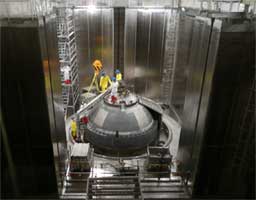 |
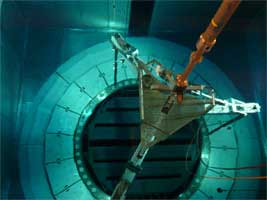 |
|---|
Lift training
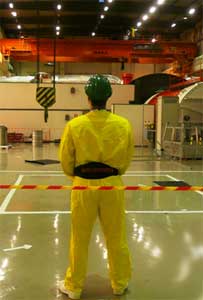
Combimatic/Combitrol maintenance training
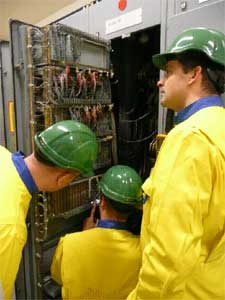
Human performance and safety culture
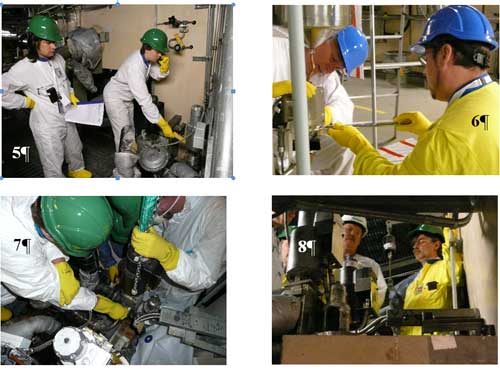
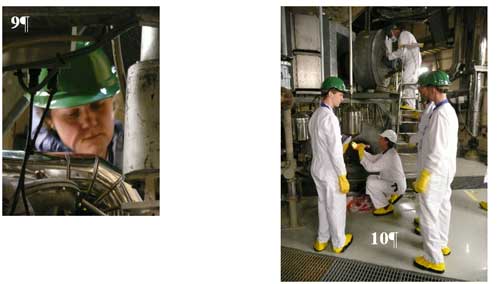
http://www.euronuclear.org/e-news/e-news-31/enela.htm

by Jean-Claude Gauthier
|
Young professionals are, of course, the nuclear ‘standard bearers’ of the future. It is with this in mind that I point to the benefits of training with the new ENELA, where our fellows can really take a quantum leap forward towards achieving their career goals.
Just over two years ago, the Competitiveness Council of Ministers representing EU Member States asked for additional efforts to be made in maintaining skills in the nuclear field. ENELA, which is championed by the European Commission, identified at an early stage that some national and international programmes were addressing the current shortage of engineers with the necessary practical training and technical expertise to drive nuclear energy programmes forward.
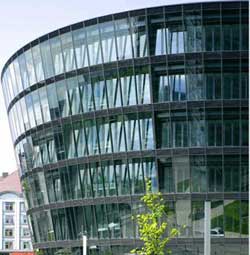
ENELA's centre of leadership
However, until now, there have been no adequate European initiatives to encourage and promote leadership recruitment and development at the level of young graduates with management potential, high-potential professionals, executive managers, opinion formers and policy makers. From ENELA's high-tech business school environment near the centre of Munich, which includes purpose-built amphitheatre-style lecture rooms, we offer practical-oriented management and leadership programmes and, therefore, fill a gap in existing training activities.
Six leading nuclear companies have led the way in filling this gap, by attracting and training promising European professionals through their support for ENELA. The six – AREVA, Axpo AG, EnBW, E.ON Kernkraft GmbH, URENCO Limited and Vattenfall AB – signed a multi-party agreement in January 2010 that formally established the Academy.
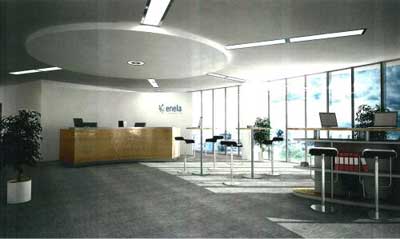
This year sees the first intake of fellows for two of our programmes: the ENELA Leadership Cycle (ELC) and the ENELA Management Programme (EMP). EMP is a technically and business-oriented degree and is unique for Europe in that it will focus on issues of pertinence to the nuclear energy community. ELC is recommended for senior managers and executives across a range of backgrounds – human resources, finance, purchasing, communications, legal – not only those with technical expertise. March 2011 sees the first intake of fellows for ELC, where they will grasp a broad understanding of the global nuclear energy sector.
We will prepare fellows from a range of backgrounds to take on additional and greater responsibilities and see them as ‘leaders-to-be’ in serving the global nuclear energy industry and its stakeholders.
In the one-year EMP degree programme, fellows will learn how to take creative approaches to simultaneously tackling scientific and commercial issues. In October 2010, a first Memorandum of Understanding (MOU) was signed with the Technical University of Munich (TUM) for support in the establishment of a joint Masters in Nuclear Energy Management for this programme.
EMP will equip fellows to deal effectively with issues they may face as their career progresses and give them the confidence and competence to deal with experts in all fields.
TUM and prestigious European partner universities and high schools, in working with ENELA and major European nuclear energy stakeholders, are bridging the gap between higher education and the wider nuclear energy community. This will enable fellows to harness their potential to move ahead in a fast-paced and demanding professional environment.
The EMP curriculum is shaped in close cooperation with key nuclear energy players. Industry experts and human resources managers, from major European nuclear energy companies and organisations, will play an active role in the ongoing development and enhancement of the curriculum, implementing training and selecting and evaluating fellows.
This strong involvement, associated with high value internships – secured exclusively for EMP – will ensure fellows are the best-placed to take advantage of opportunities that will arise in technical or commercial nuclear environments on completion of training. An extensive schedule of visits will supplement the overall training programme, so that fellows can benefit first-hand from sharing experiences in the field.
However, ENELA exists not only to serve industry but also the wider nuclear energy community. For example, governmental and administrative bodies at a local, regional, national and European level and safety authorities.
At this stage in ENELA’s development we have a broadly European focus, but we are already receiving inquiries from markets outside Europe with established nuclear power programmes and in regions where the introduction of nuclear power is on the agenda.
Our key objectives over the next 12 months are the successful implementation of both the ELC and EMP programmes. We are also developing the ENELA Conference Cycle, which is destined to become a centre of excellence for presenting and debating facts about nuclear power as part of the wider global energy mix.
Details of all ENELA’s activities and programmes are available on the Academy’s website (www.enela.eu)
http://www.euronuclear.org/e-news/e-news-31/westinghouse.htm

Learning and Development at Westinghouse Electric Europe
Westinghouse Electric Company strives to be the global provider of choice for clean, safe, reliable nuclear energy. As the nuclear energy market has grown and the demand for nuclear energy has increased, our need for a trained global workforce has increased as well. With more than 5,000 employees hired over the last 5 years, we have challenged ourselves to reassess how we transfer knowledge and technical skills from experienced employees to new hires. The ever evolving market demands of the nuclear industry require a strategic approach that will standardize the training process and provide employees who can meet the day-to-day performance demands while also reflecting our corporate culture. Armed with exceptional technical and leadership skills, these qualified professionals will meet the demands of our industry and exceed the needs of our customers.
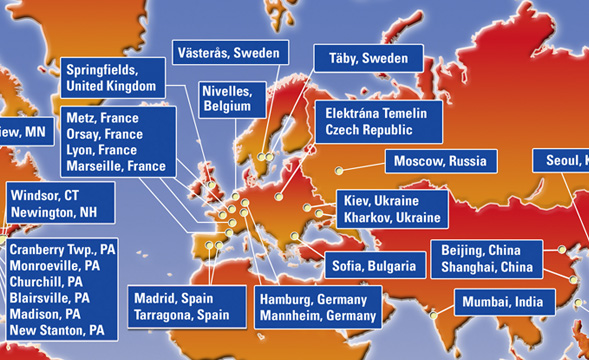
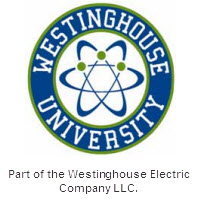
With the large influx of new employees, a recommendation was made to develop a strategic learning architecture that would better prepare these employees for the challenges that lie ahead. The strategic training architecture was called Westinghouse University. It was launched in the spring of 2010 and supports all employees, including current and future Westinghouse leaders, and select customers, partners and suppliers. It currently:
Defines the training strategy for the enterprise
Leverages common training services across product lines
Standardizes training processes
Improves the effectiveness of enterprise-wide training
Reduces the cost to revenue ratio
Improves service levels to stakeholders
As Westinghouse University attempts to integrate training activities business wide from across our business and locations around the world, it is important to identify a way to organize, expand and deliver this content. Similar to an academic university, Westinghouse University has organized the training and development content into separate "colleges." Each college focuses on a specific content area (e.g., project management) to provide access to all related courses and development activities. This approach works to break down existing departmental boundaries, and allows existing programs to be leveraged to avoid expensive duplication of training and development across our business.
Westinghouse University consists of four major components: administration, colleges, operations, and training councils. Each component plays an important role in keeping the university closely aligned with the business. The University’s administration is composed of the Board of Directors, the Executive Director and staff as well as the Learning Office. The members of the Westinghouse University Board of Directors are appointed by the Westinghouse Executive Staff. The Board is multi-disciplinary and represents a cross-section of the global company including two permanent members and eight rotating members. The board is chaired by the Senior Vice President of Human Resources.
Westinghouse University is divided into seven colleges (Behavioral, Business, Leadership, Manufacturing, Nuclear, Project Management and Technical,). Each college is led by a “Dean” and a group of subject matter experts (SMEs) from across the product lines and geographic regions.

In addition, a learning consultant from the university supports each college and provides expertise in performance consulting and learning program development. Together this team identifies all the existing courses to be included in the online global course catalog, provides oversight for identification of course content requirements, identifies and prioritizes knowledge gaps and coordinates future course development within their area of focus.
As part of the Westinghouse University launch, a new infrastructure was created that includes an Operations Team that was assembled from resources across the business. The Westinghouse University Operations Team, along with local training resources, provides learning and development support services that enable high quality program design and delivery in a timely and cost effective manner to support both individual employee needs and the business requirements. In addition, this team supports the administration of training related activities such as course catalogs, schedules and registration through the documentation of completed training events.

Our commercial Westinghouse Training and Operational Services can help customers achieve their goal of having a well-trained staff, which is essential for the safe and effective operation of a power plant. By using a blended student-centered learning system, which Westinghouse calls NucLearning, each student is an active participant in the learning process.
Westinghouse Training and Operational Services offers the following trainings:
Introductory Pressurized Water Reactor (PWR) and Boiling Water Reactor (BWR) Courses
Senior Reactor Operator (SRO) Equivalency Certification Program
Reactor Engineering Programs
Refueling Programs
Refueling Tool Maintenance Programs
Safety and Accident Management Programs
Analogue Instrumentation and Control System Courses
Digital Instrumentation and Control System Courses
Distributed Process System Courses
Boiling Water Reactor Instrumentation and Control Courses
New Plant Training (AP 1000)
Westinghouse's programs use a combination of multimedia presentation tools, online learning, hands-on training equipment, simulation, training mock-ups, and challenging learning activities to place the student at the center of the learning process. The Westinghouse Training and Operational Services staff includes adult educators, certified Senior Reactor Operator Instructors, expert I&C trainers, engineers, and training support specialists. The Westinghouse instructors use the latest student-centered learning and online education methods. Courses are delivered at the customer's site, at the Westinghouse training facilities or online.

At Westinghouse we are proud to give our employees the opportunity to work and act globally. The European Trainee Program, for example, gives high potential graduates a chance to participate in different projects and work with the latest technologies around the world. The program started as a Swedish initiative but quickly turned out to be a very successful program throughout Europe.
The 18-month Westinghouse European Trainee Program is a unique way to become acquainted with our global company. The program provides participants with broad knowledge of the business of Westinghouse and supports this process with theoretical and practical training. After 12 months spent in the country of hire, participants begin a six-month assignment in one of our locations abroad where internal education programs are alternated with ever increasing responsibilities within various sectors of the business.
In addition, all European Westinghouse locations have their own country specific learning and development initiatives. In France for example, Westinghouse developed a work/study partnership called “Apprentissage” with the local nuclear field professional school “IRUP”. Young professionals gain practical training and experience with Westinghouse France during paid professional internships that can last from one to three years. Internship experience reflects the operational field including nuclear industry, manufacturing and technical areas and is closely followed by an experienced tutor in their professional progression. In conjunction with the part-time work experience and part-time learning programs, interns undertake a graduating qualification leading either to Bachelor’s Degree of “Nuclear technician” or Master’s Degree of Nuclear Engineer. Internships are available in all Westinghouse European locations. Westinghouse is pleased to be able to hire on a permanent contract most candidates who have completed the program successfully. The wide variety of opportunities that our interns experience during their internship helps prepare them for the career path of their choice.
In the United Kingdom, Westinghouse and its recently acquired business partner Springfields Fuels Ltd, are recognized as leaders in training and development. Amongst its own graduate development program, engineering apprentice, as well as business administration apprentice schemes, Springfields Fuels offers engineering apprentice training for outside organizations. Through these development initiatives, employees gain National Vocational Qualifications (NVQs) and thereby obtain a nationally recognized qualification. In addition, Westinghouse supports its employees in gaining accreditation with relevant professional associations for their field of expertise, as well as in obtaining formal business-related qualifications, degrees, MBAs, etc.
For more information about Westinghouse Electric Company and current employment opportunities, please visit http://www.westinghousenuclear.com/ Information on customer training can be found at http://www.training.westinghousenuclear.com/.
With 15,000 employees worldwide, Westinghouse Electric Company LLC, a group company of Toshiba Corporation (TKY: 6502), is the world's pioneering nuclear energy company and is a leading supplier of nuclear plant products and technologies to utilities throughout the world. In 1957, Westinghouse supplied the world's first PWR in the Western Pennsylvania town of Shippingport. Today, Westinghouse technology is the basis for approximately one-half of the world's operating nuclear plants, including 60 percent of those in the United States and 40 percent worldwide.
Christof Paulischta, Manager EMEA, Learning & Development.
This is a program where high potential engineers and graduates have an opportunity to discover the company in 3 different assignments. It allows them to quickly progress in their career within Westinghouse and to become the manager of tomorrow. This includes 1 year in their home country and 6 months abroad at a Westinghouse location of their choice.
Engineers with less than 3 to 4 years of experience can submit their CV to Westinghouse. I, for example, worked for 3 years as a project manager, before being invited by Westinghouse to take part in the program.
I started in the quality department in France, in order to set-up all the processes of Westinghouse Electric France. My second assignment was in Germany, where I led the Human Performance Program for Field Services in Europe. My Third assignment is now in Nivelles (Belgium), where I am leading the Human Performance Program for Installation and Modification Services, as well as Field Services.
It was really beneficial to be part of a multicultural European trainee group, to share experiences, knowledge and it was a wonderful networking opportunity. As you move through various countries, you really get the global vision of Westinghouse. In addition, as a graduate of the trainee program, I now get a recognised Project Manager qualification.
I am now coming to the end of my program and I will become a Project Manager in Field Services at one of our customer's sites in Europe.
http://www.euronuclear.org/e-news/e-news-31/urenco.htm

The nuclear industry is growing worldwide, and a pipeline of talent in the science and engineering fields is required in order to meet future industry demand. The industry currently has a world-class engineering capability, with the best minds and cutting edge skills. However, with an ageing workforce and thousands of new jobs anticipated in nuclear over the next decade, the emerging nuclear renaissance will depend upon educating young engineers to become the leaders of tomorrow.
In order to reinforce URENCO’s position as a market leader in the nuclear power industry, the Group requires bright, dedicated individuals who have the knowledge, skills and experience to ‘enrich the future’. URENCO makes a strong contribution to first-class education and training both within schools and across the nuclear industry. In this article, the spotlight falls upon URENCO’s established Apprentice and Scholarships programme, which currently develops the key skills of nearly seventy young people across the world.
URENCO supports each Apprentice’s professional and technical development through qualifications and mentoring, although the focus for the scheme is not only on education. A key aspect of the programme is on developing the attitudes and behaviours that are essential for the safe and efficient operation of URENCO’s enrichment facilities.
Each Apprentice scheme varies depending upon the facility, as the scheme caters to local educational and national regulatory requirements. Across all of URENCO’s European schemes, time is split between college where Apprentices learn practical broad-based skills in mechanical, fabrication, electrical and instrumentation fields, alongside ‘on-the-job’ training at URENCO. This combination of theoretical and practical work has proven to be the most valuable method of learning. In addition to formal training processes, there are also strong mentoring schemes in place. Mentors take an active role not only in technical training and assistance on-the-job, but also within college work and examination preparation.
In late 2010, URENCO’s German facility organised a workshop for their group of Mechanical, Electrical and Administration Apprentices. This was an interactive event designed to develop their key skills of communication, confidence and creativity. The Apprentices gained a lot from the experience of working together even though they usually work in different departments. URENCO places a priority on developing this sort of cross-company collaboration, which the Group considers a key feature of effective operations within the nuclear industry.
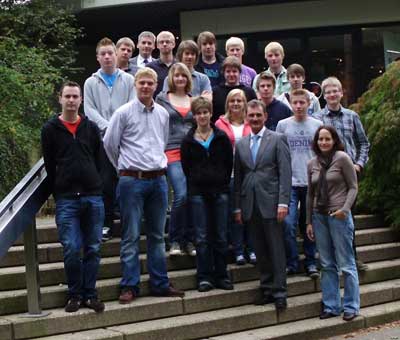
The-Apprentice-workshop-held-in-Germany-developed-key-skills-and-collaboration
URENCO’s US facility, which became operational in June 2010, will play a pivotal role in the US nuclear renaissance. In this respect, it takes full responsibility for training the next generation of nuclear engineers. The URENCO USA Scholarship Programme was established to train a pool of qualified and experienced future employees, and make a valuable contribution to the local community. URENCO USA offers up to twenty full scholarships per year, including tuition, fees and book costs, to qualified applicants in the Eunice area who are enrolled at New Mexico Junior College and undertaking an Applied Science Energy Technology degree.
Exemplifying the positive impact this sort of support can have, Jesus Natera, a 2009 recipient of the Scholarship and now employed by URENCO USA full time, commented: “The programme offers the opportunity to grow with the Company. I have an engaging future where I learn new material every day and I have a chance to accomplish new things that would have otherwise been difficult…URENCO USA has provided an engaging future for me to develop my nuclear and industrial background. |
|
Leading the WayThe hard work, professionalism and commitment that all of URENCO’s Apprentices demonstrate on a daily basis sets a high standard for their future within the Group and the wider nuclear industry. In 2010, many of URENCO’s Apprentices achieved external recognition for their hard work. Top 100 rankingIn 2006, the Chemistry Department at URENCO’s German facility created their Apprentice programme and hired their first Apprentice, Jens Bockhorn, in 2007. Due to his exceptional performance and achievements, Jens was permitted to shorten the duration of his course and passed his exams with excellent grades. On top of this, Jens’ outstanding abilities were recognised by being ranked in the Top 100 Apprentices in the region around URENCO’s German facility. Inspirational ApprenticeDuring his first year with the company, Paul Gavin, Trainee Engineering Technician, was awarded “URENCO UK Apprentice of the Year” and later gained a triple distinction for the National Diploma in Operations and Maintenance Engineering. In July 2010, Paul was named Wirral Metropolitan College’s ‘Most Improved Apprentice’ in recognition of his academic achievements. The college made the award, sponsored by the Institution of Mechanical Engineering, in recognition of Paul’s “inspiration” to other young people.
|
In addition to Apprentice schemes across the Group, URENCO is also committed to developing industry-wide education and skills organisations. A recent example of this is URENCO’s support of the UK National Skills Academy Nuclear (NSAN), of which URENCO is a founding sponsor and active partner. Aiming to create, develop and promote world class skills and career pathways, the NSAN is contributing towards a steady and sustainable future for the UK nuclear industry. Demonstrating this support, Stephen Bool and Richard Davies, both Engineering Apprentices at URENCO UK, volunteered to assist the NSAN by piloting a new e-learning package. The study time for this was around seventy hours including a two hour examination. Their feedback and results proved invaluable to NSAN and helped to develop a new software package which will enhance nuclear education across the industry.
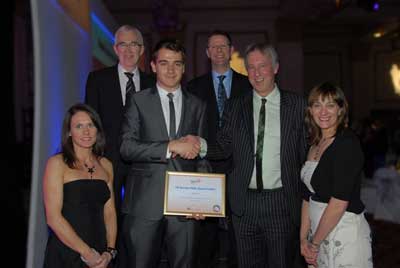
Steve-Boole-(third-from-left)-URENCO-UK-Apprentice-receives-a-coveted-NSAN-Award
URENCO’s Apprentice and Scholarship programmes offer many benefits to the Apprentice, the URENCO Group and also the wider industry. Engaging young people in the industry at the start of their career and providing high-quality education and training ensures that there is a reservoir of fully trained and dedicated employees open to the industry. Apprentices are consistently acquiring skills allowing them to contribute more effectively in the wider industry, as well as ‘earning while learning’. Through programmes such as this, URENCO plays their part in ensuring that the nuclear industry can combat skills shortages in the future, as well as being able to continue to provide a sustainable energy source long into the future.
http://www.euronuclear.org/e-news/e-news-31/nukem.htm

Demographic transformation is one of the major challenges facing the economy today. Companies that are dependent upon knowledge transfer are particularly exposed to the potentially negative impact caused by an increasingly ageing population. The “transition from old to new knowledge,” which is determined by a transfer from older to younger generations, has indeed become quite a challenge. Furthermore, the negative image of nuclear energy in Germany and its planned phase-out have brought about a situation in which fewer and fewer students are deciding to study nuclear technology. Researchers and politicians, therefore, fear that Germany might suffer a dangerous loss of nuclear engineering competence.
Like many other companies in the nuclear technology industry, NUKEM Technologies GmbH is affected by the steadily declining number of nuclear technology students and the resultant scarcity of junior engineers and physicists with expert knowledge that this situation implies. The imminent retirement of specialised employees threatens to create a knowledge deficit that needs to be redressed promptly. Because there are hardly any qualified university graduates in this specialised area, a solution must be found to pass on this specialist knowledge internally in order to give engineers and commercial staff within the company this vital specialised knowledge.
This is why the NUKEM-UNI (university) was launched in April 2008. The lectures at NUKEM-UNI are given by external experts and internal specialists. NUKEM-UNI courses are aimed at young engineers who can broaden their nuclear technology knowledge. In this way, NUKEM helps to overcome two difficulties: firstly, young engineers are familiarised with the specific NUKEM knowledge and know-how to compensate for the fact that there are almost no nuclear engineering graduates on the labour market and, secondly, the company doesn’t lose this vital knowledge when older employees retire. Young engineers, therefore, can benefit from the knowledge passed on to them by their older and more experienced colleagues. Furthermore, other interested employees have a possibility to gain an insight into other corporate divisions outside their own specialised area through lectures that give them basic technical and commercial knowledge. A NUKEM-UNI lecture lasts for about 1.5 hours on average, including a short break. Attendance is voluntary and the lectures take place outside working hours.
There is also an organised mentoring programme especially tailored to young engineers. Generally, a mentor or “patron” is assigned to each new engineering employee. Selection of these mentors is made according to their knowledge and experience, which is passed on to their designated successors or “protégés” during the course of their daily work on joint tasks or projects. The new employee has the benefit of gaining specialist knowledge that was frequently acquired during the era when nuclear technology flourished and which is, therefore, mostly unobtainable today through direct practical experience. One example of this is the planned construction of a plant in South Africa for producing high-temperature fuel elements, a facility comparable to the one which NUKEM operated for many years through its HOBEG subsidiary. A team was formed specifically for this project consisting of experienced employees and highly qualified engineers at the start of their careers who worked outstandingly well together. In the end, not only did they successfully complete this project, but they also enabled the transfer of knowledge about the plant to a new generation of engineers.
In addition to receiving such specialist knowledge, thanks to this kind of patronage, the trainee also acquires experience in daily matters of work organisation and frequently profits too from the general experience of his patron. The mentors, on the other hand, are given the possibility to call into question conventional paths and methods and actively pass on their knowledge, of which they are often rightly proud. Progress with this process is usually monitored and overseen by the hierarchy.
Refresher courses are also held regularly. These are organised by NUKEM with the aim of transferring knowledge. They include learning to master working tools, developing cost awareness, learning the basics of costs management and acceptance and practical organisational demands, as well as compliance with safety regulations.
Communicating this knowledge leads in turn to quality improvements and enhanced efficiency, which contribute to the company’s economic success. Participation is mandatory and partly required by law, whereby the composition of the target groups is dependent upon the topic in question. This series of training courses currently covers sixteen topics and work is in progress to offer more. The lecturers here are employees and the events are designed to last for roughly one hour. This education takes place internally and during working hours.
Bea Riecken, NUKEM Technologies GmbH, Industriestr. 13, 63755 Alzenau
http://www.euronuclear.org/e-news/e-news-31/ansaldo.htm

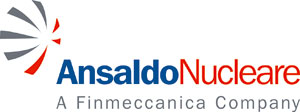
Attached is some background information on education and training programmes offered by Ansaldo Nucleare (ANN). We offer two kinds of programmes:
Internal annual training: this basically relates to company staff members who are periodically trained in accordance with ANN internal procedures
Masters in Nuclear Science and Technology: this education and training programme is oriented to new recruits who will join the company after passing their examinations
The main objective is to enhance the quality of every aspect of the company’s work, including the design, fabrication and installation of nuclear power plants and facilities. With this in mind, Ansaldo Nucleare considers the offer of vocational training and the systematic improvement of the staff’s competences to be of paramount importance. Ansaldo Nucleare regularly organises educational courses and training programmes that are tailored to meet the competences and needs of each individual, according to the specific roles and responsibilities that he or she has.
Training and induction courses are arranged in the following key areas:
The use of new software technologies and tools. These include the training of designers and specialists in the use of CAD/CAE systems aimed at implementing design optimisation processes. Also included are training courses for personnel involved in “interactive-system” design processes.
Tailor-made training courses focused on topics of special interest to the company.
Internal courses – supported by both internal and external teaching staff – dealing with specific subjects within the broader gamut of the company’s interests.
Each employee, based on her/his specific role and responsibility, is annually audited to assess the level of competence and experience acquired during the performing of his/her normal duties. His or her specific training and induction needs are then identified - when required - and forwarded to management for further implementation. Such an assessment is periodically made on the basis of the above-mentioned key issues, with special focus on:
elements identified as “improvement targets” according to the company’s Quality Management System (QMS) programmes
an analysis and critical review of those tasks that are susceptible to need further optimisation through the improvement of the quality of the products
liabilities and obligations in relation to applicable laws, regulations and standards
company policies
whenever personnel formation/induction is necessary in relation to changes that might impact upon the company’s QMS
any other specific need, as appropriate
Each employee has a Proficiency Maintenance Record, which is regularly kept up-to-date to assess whether specific induction/training is necessary in relation to the actual degree of competence and experience recorded.
At the end of 2009, Ansaldo Nucleare supported a Masters in Nuclear Science and Technology degree course organised by the University of Genoa. The scope of the Masters was to attract graduate engineers specialised in other areas to the nuclear field, with the aim of providing them with a basic knowledge of nuclear industrial applications. The Masters, offered by the engineering and physics faculties of Genoa University, involved also a number of organisations, including Ansaldo Energia, INFN (Istituto Nazionale di Fisica Nucleare), CIRTEN, Fondazione Ansaldo, Camera di Commercio di Genova and CNR (Centro Nazionale Ricerche), d’Apollonia. A selection processs was carried out in September 2009 (100 applications) and the Masters course started in November 2009. Seventeen graduates participated and are presently working as in-house trainees at Ansaldo Nucleare and d’Apollonia.
The Masters was provided with regional funding from the EU. The company actively participated by providing several professors to teach the course, as well as by organising seminars in parallel with the main sessions. The objective was to give to the students design and detailed technical information. The courses were organised as a basic course (common to all students) that was then followed by three different specialisation courses offered in the following main areas:
Fluid dynamic and non-linear systems
Mechanics
Reactor Physics and Decommissioning
During the summer of 2010, a visit to Romania was organised and the students had the opportunity to visit the two units at Cernavoda NPP (CANDU), the fuel elements fabrication shop, the heavy water distillation plant and an experimental reactor located in Pitesti.
The student training courses provided by Ansaldo Nucleare and d’Apollonia were organised with dedicated tutorship within each company. The subject of the project work was chosen from a number of activities that each company is involved in. In other words, an “on-the-job” training scheme was chosen. This approach allowed smooth integration of the students within the specific units of the two companies, creating basis for future hiring or contract work.
A second edition of the Masters is planned to start in 2011. This second edition features the lessons learned from the first edition and will last for 12 months. The Masters programme has been selected by the University of Genoa as the basis for the development of a specialised course in nuclear engineering that is expected to start at the end of 2012. In this way, this initiative helped universities in Italy to develop a new direction for nuclear education in the country.
http://www.euronuclear.org/e-news/e-news-31/edf.htm

The EDF Group is facing a significant human capital challenge in sustaining the new nuclear renaissance in Europe and beyond. In France, EDF has a strongly established human capital strategy to support the nuclear industry. This includes an ambitious long-term plan for recruitment, a large in-house training capability and significant technical and financial support for academic education programmes. However, in the UK, where the Group has ambitions to lead the nuclear revival, a strategy has had to be developed and implemented to ensure that the right human capital is available to deliver our plans. This was due in part to no new nuclear plant being commissioned in the UK since 1986. In addition, EDF’s ambition to be a leader in the world-wide renaissance of low-carbon, sustainable and affordable nuclear energy will only exacerbate any shortage of human capital unless steps are taken now to ensure a supply of highly qualified people is available. The energy industry is able to offer exciting opportunities for getting top quality jobs against a backdrop of difficult economic conditions.
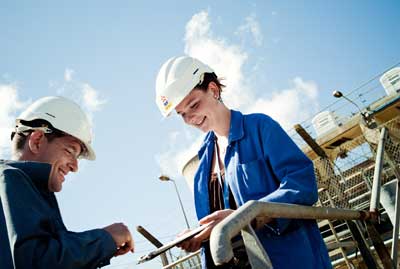
The purpose of this article is to set out the steps being taken by EDF and EDF Energy in the UK to ensure that their plans are not being jeopardised by a lack of the right people at the right time.
With a five-year construction programme and a 60-year operating lifetime for new reactors the nuclear industry can only be described as a long-term industry. Also it requires specialised skills for which a significant period of training is required. EDF Energy, working closely with EDF to ensure that group synergies are realised and knowledge transferred effectively, has developed a ten-year project to identify its human capital requirements. This project identified that a recruitment programme of 8,000 staff is required in the next five years for all of EDF Energy’s businesses. This includes customer services, generation and nuclear power plants - both existing and new build - and represents about 50% of existing staff. Whilst much of the recruitment is to replace staff leaving EDF Energy for a variety of reasons, it has been estimated that our nuclear businesses will require 10% more staff.
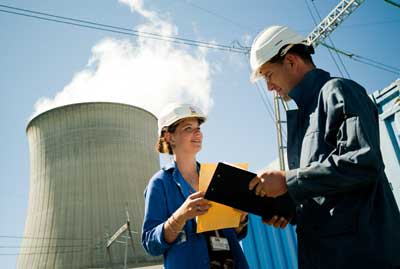
The project also identified that EDF Energy’s nuclear businesses are facing a number of human capital challenges:
An ageing workforce with a significant proportion nearing retirement in the existing nuclear business
Ensuring that the existing nuclear business continues to be properly managed with appropriate skills
The requirement to develop new skills to support the delivery of the European Pressurised Reactor programme (New Nuclear programme).
In addition, other energy companies have plans to develop a nuclear programme within the UK and EDF Energy’s suppliers will also require additional resources to help EDF Energy implement its New Nuclear programme. Without an adequately trained workforce available to the energy industry and its supply partners, delivery of the UK’s ambitious low-carbon programme could be at risk and also its cost could increase due to competition for scarce human capital.
EDF Energy has taken action to ensure that it has available adequately trained people for its business by putting in place a six-point action plan.
Deliver EDF Energy’s skills requirements by 2015. This involves a range of initiatives including:
Creating strategic partnerships with training bodies such as Business in the Community, Bright Futures and Cogent (a sector skills council for nuclear and other high-tech industries). These organisations bring to EDF Energy additional training resources and links to education
Working closely with a number of universities to ensure that the courses offered are relevant and students are aware of career prospects within the nuclear industry
Expanding training facilities within the company to provide more capacity and also new resources such as EPR simulators
Improving the transfer of skills from retiring staff to other staff.
As part of this strategy EDF Energy is investing £4.5m to establish two new facilities: an Energy Skills Centre, to provide nationwide training for EDF Energy and a Construction Skills Centre to provide training for the new build project. Both centres are near the proposed site for two new nuclear stations, at Hinkley Point, in Somerset.
Deliver a recruitment campaign to recruit 8,000 talented professionals by 2015.
Increase the UK’s talent pool of individuals with scientific, technical, engineering and mathematics skills. A number of initiatives have been developed for schools such as the POD - an e-learning tool to develop awareness of sustainability and other events where EDF Energy staff work with schools and the wider community on sustainability projects. This helps inspire children to see the possibilities of a career in the energy industry and increases awareness of the importance of sustainability. So far, over 2.5 million children have been involved in these programmes.
Develop leadership skills within EDF Energy through assessment as part of the annual review process, leadership tool kits and training facilities.
Impact on our community’s DNA to increase employability, particularly for those who have been unemployed for a long period of time.
Educate our workforce and the wider public with regards to sustainability. This is increasingly important with the implementation of smart meters and other initiatives that require a change in consumers’ behaviour in order to be fully effective.
Since the privatisation of the UK electricity industry some 20 years ago, the main objective within the industry has been one of achieving energy efficiency savings through modernisation and economies of scale. To meet the UK’s sustainability and low-carbon goals the Office of Gas and Electricity Markets has estimated that an investment of £200bn is required by 2020. This is a significant change of direction and will require the industry and its partners to acquire new skills and resources leading to high quality employment. This will offer welcome job opportunities at a time when economic conditions are difficult. In addition, to be fully effective EDF Energy needs to interact with the education and consumer communities to ensure that they have the required skills and knowledge to travel with us on this exciting low-carbon, sustainable and affordable energy journey.
http://www.euronuclear.org/e-news/e-news-31/areva.htm

The nuclear industry is facing two major challenges: an ageing workforce and rapid growth. Ranked number one in the global nuclear power industry, AREVA provides all related skills enhancement and training solutions for its partners and customers, both in France and in the rest of the world. These are based upon optimum safety levels, as well as on the experience and know-how developed by the Group for its own training requirements.
Major institutions in France (e.g. universities, INSTN – the national institute for nuclear technology- etc.) provide the education, required at various levels, by staff working in the nuclear industry. AREVA is involved in defining programmes, contributing lecturers, offering internships and, in general, presenting the industry’s viewpoint. One example is the creation of the International Master's degree in Nuclear Energy, run by a consortium of several academic institutions in France (Université Paris-Sud 11, ParisTech, Supélec, Ecole Centrale Paris, INSTN) with the support of major industrial companies (AREVA, EDF, GDF-SUEZ).
AREVA also participates in ENELA (European Nuclear Energy Leaders Academy) with other industrial actors, such as Urenco, Axpo, EnBW, E.ON and Vattenfall and with the support of the European Commission. The objective is to train post-graduates and high potential employees with different backgrounds to become leaders in joint European nuclear ventures and institutions, and to facilitate a dialogue with industrial and non-industrial stakeholders.
As a project progresses through the various industrial phases, AREVA’s training role increases in parallel with the technological content. Industrial training is provided by AREVA at a dozen training centres in Europe and in the USA. Around 600 courses are currently on offer, with 100 trainers and several thousand students participating every year. All teaching methods are used, including e-learning, classroom sessions, simulations and experimental reactor training, fact-finding missions and visits to operating nuclear facilities and specific internships. AREVA is also able to set up and manage turnkey training centres.
Courses are available to all the Group’s partners and stakeholders, i.e. government authorities, technical support organisations (IRSN, TÜV, etc), engineering & manufacturing companies (design & construction, decommissioning), utilities (operation, maintenance), uranium cycle plants (operation, maintenance) and suppliers.
The courses cover all stages of a nuclear programme and can meet the needs of both newcomers and current actors in the nuclear field. They focus not only on scientific and technical subjects, but also on project management, with specific programmes covering the entire lifecycle of a nuclear facility:
Introduction to nuclear energy
Supplier excellence
Nuclear project management
Nuclear safety skills
Design, operation, maintenance and decommissioning of nuclear facilities
|
Fuel Training Pool, US |
Study Simulator, France |
For more information consult:
www.areva.com
AREVA Training Department
contact:
serge.runge@areva.com
http://www.euronuclear.org/e-news/e-news-31/sck-cen.htm

The Belgian Nuclear Research Centre (SCK•CEN) was created in 1952 to give the Belgian academic and industrial world access to worldwide developments in the field of nuclear energy. It is a “Foundation with Public Utility,” with legal status according to Belgian private law, and is under the tutorship of the Belgian Federal Minister of Energy.
Since 1991, its statutory mission gives priority to research into issues of societal concern, such as the safety of nuclear installations, radiation protection, the safe treatment and disposal of radioactive waste, the fight against uncontrolled proliferation of fissile materials and the combating of terrorism. The Centre also develops, gathers and disseminates necessary knowledge through education programmes and communications, and provides all relevant services required in the nuclear domain (by the medical sector, the nuclear industry and the government).
Today, about 640 employees work on advancing the peaceful industrial and medical applications of nuclear energy. SCK-CEN has a turn-over of about 80 M EURO. It is also an important partner for education and training (E&T) projects in Belgium (for the nuclear, medical and non-nuclear sectors), as well as internationally. The Centre's expertise and infrastructure have been adapted to meet these E&T needs.
Thanks to the considerable experience it has acquired in the peaceful applications of nuclear science and technology, SCK•CEN has achieved a reputation for being an outstanding centre of research, training and education. Its activities are concentrated in the following areas:
|
SCK•CEN offers students the possibility to carry out their research work in its laboratories.
On a regular basis, final-year Bachelor or Masters level students visit SCK•CEN and are given guidance on their thesis by our researchers. In a conscious effort to increase its pool of highly specialised young researchers, and to enhance its cooperation with universities, SCK•CEN embarked, in 1992, on a bold programme to support about 10 PhD candidates or post-doctoral researchers every year. These early-stage researchers are recruited for the research areas that reflect the institute’s priority programmes and main R&D area s.
Our courses are designed for the nuclear, medical and the non-nuclear industries, national and international policy-making organisations, academia and the general public. E&T programmes are also organised in cooperation with universities, technical universities, nuclear power plants and public and private healthcare service providers. In addition, SCK•CEN is involved in international research networks and training programmes, i.e. of the European Commission and the IAEA.
SCK•CEN provides courses on a wide range of nuclear topics covered by the Centre's research programmes. The main topics include:
Radiation protection
Nuclear engineering
Nuclear materials issues
Emergency planning
Waste and disposal
Decommissioning and dismantling
Radiation biology and ecology
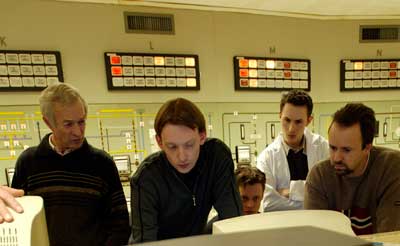
Fig 1. Training of reactor pilots at SCK•CEN
|
 |
Fig 2. Nuclear emergency management course
Except in the case of academic collaborative projects, all course programmes are tailored to meet the needs of the trainees and are available to fit into a larger modular programme.
The courses can be taught at the premises of the customer or at SCK•CEN's Conference Centre, which offers fully-equipped lecture rooms. The Conference Centre is located next to the SCK•CEN’s technical complex, allowing easy access for the practical training sessions. Several laboratories and installations are available for research carried out by national and foreign students.

Fig 3. SCK•CEN's Conference Centre
The team of lecturers includes engineers, physicists, technicians, biologists, occupational physicians and social scientists. They all bring to the course programmes the individual insight and ideas that reflect their specific background. As SCK•CEN staff members they have acquired sound knowledge and experience in their given field and can, therefore, directly apply their theoretical knowledge and practical experience to the benefit of the various courses.
In December 2010, SCK•CEN obtained the “QFOR” quality label for its nuclear courses.
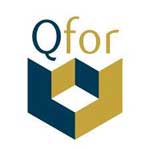
Through networking and participation in international programmes, SCK•CEN aims to contribute to the better harmonisation of training methods and skills recognition on both a national and international level. Within this framework, specific issues of interest to SCK•CEN include standard requirements for course programmes and educational materials, the development of trans-disciplinary training programmes, e-learning and distance learning, the link between radiation safety and conventional safety, the organisation of experience feedback, international exchange of knowledge and experience and the sharing of lecturers, training facilities and educational materials. These are the topics covered by European networks such as EUTERP (European Training and Education in Radiation Protection Foundation) and ENETRAP (European Network for Education and Training in Radiation Protection), in which SCK•CEN plays a prominent role. Other FP7 projects, like TRASNUSAFE, ENEN III, ECNET and ENEN-RU - in which SCK•CEN is an active partner - also share the same goals with regards to harmonisation and facilitating trans-border employee mobility.
Understanding the benefits and risks of radioactivity requires not only technical knowledge and training, but also an insight into a particular context and a feeling for the social and philosophical aspects of that context. In coordination with the academic sector, the research carried out at SCK•CEN's International School for Radiological Protection (ISRP) focuses on how to integrate this trans-disciplinary approach in education and training programmes for both professionals and students/trainees.
More information on the education and training activities of SCK•CEN can be found on at: www.sckcen.be, or by contacting Dr. Michèle Coeck, Education and Training Coordinator, Boeretang 200, BE-2400 Mol, Belgium, tel. + 32 14 33 21 80, mcoeck@sckcen.be.
http://www.euronuclear.org/e-news/e-news-31/enetrap.htm

The overall objective of ENETRAP II, which is one of the EC’s 7th Framework Programme projects, is to develop European high-quality "reference standards" and good practices for training in radiation protection (RP). These relate specifically to training up to the level of radiation protection expert (RPE) and radiation protection officer (RPO), in accordance with the new European BSS (basic safety standards).
It is envisaged that the outcome of this project will be instrumental in assisting cooperation between regulators, trainers and “customers” (nuclear industry, research, non-nuclear industry, etc.) in achieving harmonisation of the requirements for, and the education and training of RPEs and RPOs in Europe. It will stimulate competence building and career development in RP to meet future demands.
One major goal of the ENETRAP II project is to monitor the effectiveness of the proposed methodologies by organising pilot sessions during selected training courses. The modular courses in the first phase are designed for RPE. They include the “common basis” (Modules 1 to 3) and a series of specialised “optional modules” on occupational radiation protection at different installations where ionising radiation is applied. These are summarised below.
Module 1: Basics 14/03-18/03/2011
Module 2: Foundation 21/03-25/03/2011
Module 3: Occupational RP 28/03-30/03/2011
Module 4: NPPs and Research Reactors 04/04-08/04/2011
Module 6: Unsealed Sources, Research and Non-Nuclear 30/03-01/04/2011
Module 8: NORM 23/05-26/05/2011
Modules 1 to 4 and Module 6 will take place at KIT (Karlsruhe Institute of Technology), Karlsruhe, Germany, and Module 8 at NRG, in Petten, the Netherlands. All modules will be taught in English.
Special features of the courses include the hands-on involvement of participants through practically-oriented laboratory exercises, workshops and technical visits. There will be time devoted to discussions on the effectiveness of the proposed training standards.
A certificate will be issued upon successful completion of a training module. The certificates will be mutually recognised within the EC, facilitating international exchange of RP personnel.
The modules offered can be booked separately or as a complete European Radiation Protection Training Course (ERPTC) package. Participation in the whole ERPTC package fulfils all the training requirements of European RPEs, e.g. Modules 1 to 4 for RPEs in NPPs and research reactors and Modules 1 to 3 and Module 6 for RPEs in non-nuclear industry and research.
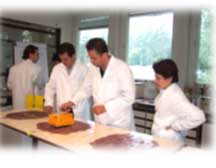
For further information and registration contact Dr. Siegurd Möbius, KIT:
Phone: +49 7247 82-3791 Fax: +49 7247 82-4857
Email: siegurd.moebius@kit.edu
Alternatively, visit enetrap2.sckcen.be
http://www.euronuclear.org/e-news/e-news-31/ehron.htm
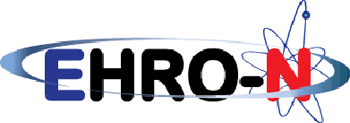
The situation concerning nuclear human resources has deteriorated in the EU in the past decades and there is a risk of the loss of important nuclear knowledge if no action is taken. This prompted the Council of the EU to conclude, on 1 December 2008, that it is “essential to maintain in the European Union a high level of training in the nuclear field” and, at the same time, preserve the skills that we already have. The latter is especially true if we are to guarantee the highest level of nuclear safety (subject of the Council’s Nuclear Safety Directive, which was adopted on 25 June 2009).
The idea of a European Human Resources Observatory for the Nuclear Energy Sector (EHRO-N) was born within the European Nuclear Energy Forum (ENEF), which was launched by the European Commission’s Directorate General for Energy (DG ENER). The setting up of EHRO-N began officially in October 2009. The EC’s DG JRC - Institute for Energy - was charged with its management. A Senior Advisory Group (SAG) provides guidance on conceptual issues.
Cooperation and coordination with international actors such as the IAEA and the OECD/NEA were established since the situation regarding nuclear human resources is similar throughout the world.
By creating a database of nuclear skills needed in the short, medium, and long-term perspective, and by identifying gaps and deficiencies in the educational and training infrastructure in the EU, EHRO-N should be able to link supply and demand for nuclear human resources in the EU.
Recently, co-operation was enlarged to include the ENS with the starting up of bi-lateral discussions with the aim of streamlining resources and obtaining optimal results.
This process went very smoothly, as the current President of the ENS is also a member of the Senior Advisory Group (SAG) of EHRO-N.
The way EHRO-N operates is straight forward, consisting mainly of 2 instruments:
An Operating Agent (independent, EC-JRC-IE) |
Senior Advisory Group (SAG) The SAG is composed of highly-qualified experts, who meet a maximum of twice a year and focus on providing general guidance on conceptual issues. |
One objective is to organize an EHRO-N launch event with, featuring the presentation of trend analyses, in the first half of 2011.
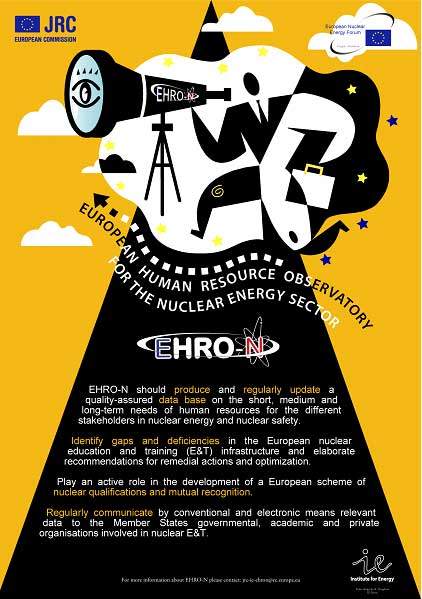
http://www.euronuclear.org/e-news/e-news-31/austria.htm

Nuclear education is the process of acquiring the knowledge and expertise needed to make use of the various applications of nuclear technology, whereas nuclear knowledge is the accumulation of the facts that you receive from a good education and training. Universities and advanced technical colleges are the only institutions capable of providing this kind of education. Unfortunately, for more than a decade now there has been a worldwide decline in the number of academic programmes offering an education in nuclear sciences. To address this erosion of nuclear knowledge, the Vienna University of Technology/Atominstitute (VUT/ATI) contributes to European and international efforts that are being made to reduce genuine concerns about the future of nuclear education. This paper highlights the nuclear Education and Training (E&T) activities of the VUT/ATI at a national, European and global level. The main goal of the VUT/ATI’s nuclear E&T programmes is to keep nuclear education alive - especially in view of the prevailing anti-nuclear political environment in Austria.
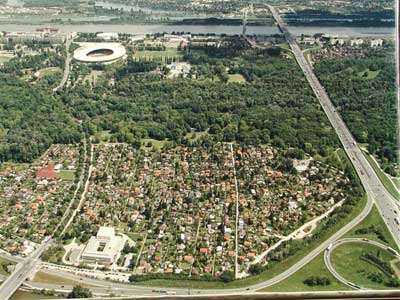
To provide high quality nuclear E&T to students/trainees in a timely and cost-effective manner, in partnership with other EU universities and research institutes, the VUT/ATI is actively involved in many regional and international nuclear E&T activities through the European Nuclear Education Network (ENEN) and the International Atomic Energy Agency (IAEA).
The applications of nuclear technology are based on the nuclear knowledge acquired from E&T activities. The uninterrupted transfer of nuclear knowledge from one generation to the next is a key component for knowledge sustainability when it comes to nuclear technology. Since the early nineties, a severe shortage of qualified nuclear manpower has affected many countries, especially industrialised countries. This has mainly been due to the retirement of workers and the lack of adequate replacements resulting from a negative public perception of nuclear technology and a lack of interest from the young people in pursuing a nuclear career [1]. Europe has been hit by this serious situation, even in those member countries that have a strong nuclear power programme. In response, Europe has taken a wide range of measures to combat this situation, including the development of a nuclear education networks (including ENEN, an active promoter of nuclear education) and E&T programmes at universities and research institutes. These programmes aim to provide students and professors with exchange programmes and to improve the level of public awareness in favor of nuclear at both a local and European level.
To further maintain and improve the level of skilled nuclear manpower an enhancement of E&T activities in the nuclear field is urgently required. This will ensure the safe and efficient development of nuclear technology [2].
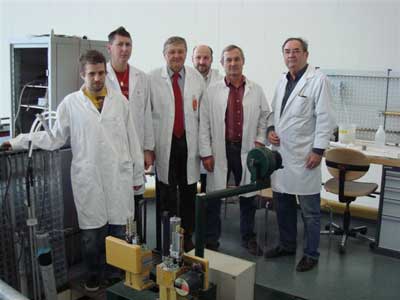
For an optimal application of nuclear technologies, specialised human resources are needed. The most crucial requirement here is for sufficient graduates and highly-qualified personnel, because these are the people who are needed to operate existing facilities, ensure capacity building and carry out innovative research and development (R&D). This manpower demand is primarily met by universities and training institutes. They play a key role in maintaining and transferring nuclear knowledge from one generation to the next generation through their E&T activities [3]. The E&T processes look similar but they are in fact different facets of learning, and their history, purpose, and methodology are clearly different. This paper focuses on the main differences, especially between education and training. It also shows examples of programmes offered by the VUT/ATI.
Education is broader than just training because it focuses on what is required to maintain a broad range and continuity of competences across the generations. It is essentially a knowledge-driven process, involving academic institutions as suppliers and students as customers. Training, on the other hand, is learning a particular skill needed to deliver a particular result. Training courses follow different processes to those of regular academic education. Training is essentially an application-driven process, involving industrial training organisations as suppliers and professionals as customers [3].
An essential component in ensuring a high level of expertise to satisfy current and future demand is a sustainable education and training infrastructure. Educational systems provide the young generation with the initial curricula. It is knowledge-based and generally provided by academia. Complementary to that education is the uninterrupted maintenance of the level of skills and competence. Training activities must be provided to young and junior professionals working in all nuclear disciplines. Normally, students join the training institute directly after graduation. The academic degree provides them with a certain theoretical background in a given subject, such as physics, mathematics and computer sciences. This knowledge is a prerequisite for training. The academic programme provides, therefore, the necessary input for training institutions to offer training in a specific subject.
Particularly at a higher education level, training at academic institutions may not be adequate for a specific subject. Therefore, training institutes are needed to provide adequate instruction in those specific subjects. It is common practice worldwide that educational and training institutions work separately but in close cooperation. The cooperation between education and training bodies is both carried out and recognised at an international level. This has led to the development of national and international networks that have existed now for about a decade. For example, ENEN was created as a result of co-operation between European universities involved in nuclear education and research, nuclear research centers and the nuclear industry [4].
Austria has a strong anti-nuclear policy. It is very difficult to keep nuclear knowledge alive in this country because of political factors. Nevertheless, the VUT/ATI is involved in many E&T activities at a national level. There is no Austrian university or institute offering a nuclear engineering degree, but there are some pure nuclear science subjects (i.e. courses in nuclear engineering, reactor physics, reactor experiments, dosimetry and radiation protection etc.) that are offered on the VUT Technical Physics curricula at a BSc and MSc level [5].
The Federal Ministry for Science and Education supports and regulates the educational institutions (i.e. universities, R&D organisations etc.) in Austria. Universities, through their faculties and institutes, provide an objective-oriented education. VUT (VUT www.tuwien.ac.at) is composed of eight faculties. Each faculty administrates different departments. The departments of physics includes the Institute of Applied Physics , the Institute of Theoretical Physics , the Institute of Solid State Physics and the Institute of Atomic and Subatomic Physics (formerly the Atominstitute). This paper focuses on the nuclear E&T activities of the ATI. The experimental nuclear facilities available at the institute are briefly described below [5].
The ATI (www.ati.ac.at) has been operating the 250 kW TRIGA Mark II research reactor since March 1962. This reactor is the only operational research reactor in Austria. It is equipped with a thermal column, a radiographic collimator, four beam tubes and three in-core pneumatic transfer systems. Three of these beam tubes (A, B, and C) are radial beam tubes, while the fourth one is a tangential beam. Inside the core there are about 16 irradiation positions for irradiation experiments. Outside the core the four beam tubes supply the neutron. These facilities are used in the fields of:
Research and training in nuclear science
Radio-isotope production for in-house research
Neutron scattering experiments to study neutron and solid-state physics
Neutron radiography/tomography and
Neutron activation analysis
The first two research areas (1 and 2) use several irradiation facilities located inside or next to the reactor core. The other three areas (3, 4 and 5) use facilities positioned outside the reactor core.
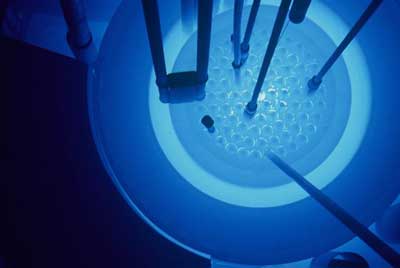
The scope of this paper is limited only to the nuclear E&T activities of the ATI at national, European and international level, using the above-mentioned experimental facilities. The different research groups working at the Institute and using the TRIGA reactor are engaged in the following research areas [5]:
Nuclear technology, EDV and electronics
Neutron and solid state physics
Radiochemistry
Radiation protection and dosimetry
Low temperature physics and superconductivity
This section describes practical reactor physics and reactor kinetics experiments, as well as I&C experiments, which are offered by the ATI at the TRIGA Mark II reactor. These experiments are very general and can be applied to other research reactor types with some modifications [6]. The theoretical and practical details of each experiment are described very briefly below:
Thermal neutron flux measurement: Thin cadmium (Cd) covered and bare gold (Au) foils are irradiated in the radial and axial positions in the TRIGA reactor core at 10W. From the Cd-difference measurement, the radial and axial neutron flux distribution is determined.
Influence of the void coefficient on reactor power: At a reactor power level of 10W, a small container with different air volumes is pulled axially through the reactor core while the reactor is in automatic operation mode. The reactivity effect of volume and position in the core is determined.
Critical experiment: Several fuel elements are removed from the reactor core and sequentially re-loaded back into the core. The neutron count rate is measured after each step of re-loading. At each step, the measurements are performed with all control rods up and then down. Criticality is reached with all control rods up after reloading of five fuel elements.
Control rod calibration: One control rod is calibrated by removing it in steps from the critical core to measure the resulting reactor period. Using the in-hour equation the respective reactivity value is determined.
Verification of the radiation level during reactor operation: Using various radiation detectors the radiation field in different reactor areas is verified.
Control rod calibration in the subcritical range: The safety rod is calibrated in the subcritical range by cross-calibration, using the reactivity data of the regulating rod. In this case the safety rod is removed in small steps from the lowest possible position and the count rate increase is measured with a fission chamber.
Reactivity values of fuel elements in different core positions: Keeping the reactor in automatic control with 10W, a fuel element is removed consecutively from each of the five ring positions. The loss of reactivity is compensated for by the movement of one control rod in automatic mode. From the difference of the rod position and the rod calibration curve the reactivity values of the fuel elements in different core positions are determined.
Reactor power calibration and temperature coefficient of reactivity: At a reactor power of 10 W, the rod positions and the water and fuel temperature are noted. Then the reactor power is raised to 100 kW and again the same values are recorded. From the difference in the rod positions and the fuel temperature increase the fuel temperature coefficient can be determined. Then reactor is operated for only 90 minutes, with convection cooling, and the increase in water temperature is monitored. Comparing the temperature increase with the value from a previous thermal power calibration, the thermal reactor power is determined.
Demonstration of a prompt critical power excursion: Due to the strong negative temperature coefficient of reactivity, the TRIGA reactors allow prompt critical excursion to 1000 times the normal power without any damage to the core. This is demonstrated using a pneumatic rod, which is removed promptly from the critical core. Typical power levels of 250 to 300 MW are reached for a period of about 40 minutes.
Introduction to typical research reactor instrumentation: An introduction to the instrumentation of the TRIGA Mark II reactor is provided. At the end, participants are able to start up the reactor to reach various power levels.
Calibration of the nuclear channels: The nuclear and temperature channels are calibrated according to given procedures. The alarm and scram settings are verified.
Measurement of control rod drop times: The three control rod drop times are checked according to given procedures. The individual rod drop time is measured from different rod positions.
Experiments with a Compensated Ionisation Chamber (CIC): The CIC is used to determine the optimal compensation voltage and to measure the A-V characteristics at different power levels.
Experiments with a fission chamber: A fission chamber is used to set the discriminator between gamma and neutron signals and to determine the range of neutrons outside the core.
Self-powered neutron detectors: A self-powered neutron detector is exposed in the core centre and it´s activation and decay is monitored. This enables one to determining the type of emitter material.
NPP Simulator Program (PWR): Using an IAEA simulator programme for PWR type reactors, a cold start-up is carried out and followed by power changes and selected incident simulation.
Safeguards mock-up inspection: With this exercise students are instructed how the IAEA and/or EURATOM regularly control the fissile material in nuclear facilities. In the theoretical part, the registering of fissile material, movements from or to the facility, types of codes etc. are all explained. During the practical part, various types of fissile material such as fuel elements, fission chambers, low and medium-enriched uranium samples are identified and demonstrated using available detectors.
Demonstration fuel handling: One fuel element is removed from the core and placed under water in the 1.5 ton fuel transfer lead container. Then the container is removed from the reactor tank and the radiation levels are checked at the container’s surface.
Gamma spectrometry with various fuel samples: Gamma spectrometry is one of the common methods used for irradiated fuel inspection. By measuring the fission monitoring isotopes (cesium, zirconium etc.) one can correlate the amount (or activity) of these isotopes with their respective burn-up values. Due to a direct proportional relation between the cesium ratio (Cs134/Cs137) and burn-up value, the gamma spectroscopy of the spent fuel is very useful for long irradiation periods. This experiment demonstrates the measurement of cesium isotopes (Cs134, Cs137). The ATI has developed a special fuel scanning device that has the ability to scan each millimeter of irradiated fuel accurately in axial direction.
Beyond secondary school education level, it is very important to attract the young generation to acquire basic nuclear knowledge that may later lead them to pursue higher-level nuclear education. Although this is a long-term target it would improve the process of nuclear education for the following reasons:
It is easier to attract young people to higher-level nuclear education when they have already some fundamental nuclear knowledge. This is only possible if they receive such knowledge at secondary school level.
Most students decide their future career when they finish their secondary education. The basic know-how of nuclear technology can help them to select this direction for their future and increase their interest.
It would also benefit national and international decision-makers (e.g. politicians, economists, journalists etc.) if they were to have some basic knowledge of nuclear technology
Due to these factors, in addition to its regular academic programmes, the ATI has recently designed a new programme for secondary school pupils to follow just before obtaining their final school certificate, prior to commencing university studies (17 to 18 years of age). In co-operation with a dedicated physics teacher, two one-day courses were organised in December 2010 to attract future university students to study nuclear physics. As about 24 pupils applied for each class they were divided into 3 equal groups. After an introduction to the research areas covered by the ATI, Group 1 was introduced to the TRIGA reactor. Each student was shown how to start the TRIGA reactor under professional supervision. Meanwhile, Group 2 was introduced to alpha, beta and gamma radiation and shown how to identify unknown radiation sources. Group 3 visited ATI’s laboratories, including those dedicated to quantum optics, low temperature physics and radiochemistry. Each group was guided by a trained professional and two students. Throughout the day the groups rotated, so that every pupil enjoyed the full programme. The final discussions and the subsequently very positive course evaluation concluded that the course does heighten the interest of future students in studying nuclear science. It proved to be a great success. The course will be repeated in the future.
ATI’s university-level E&T courses mainly involve academic qualification (BS, Master and PhD) programmes and some training modules. No university in Austria offers a pure nuclear engineering degree. Every year about twenty Masters and five PhD students at ATI graduate in nuclear-related subjects.
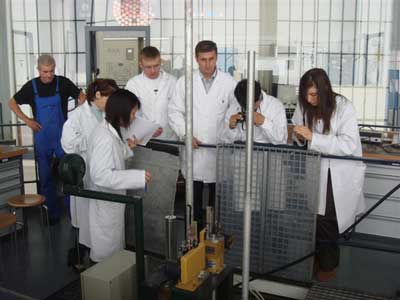
Figure 1 depicts an increasing trend in favour of nuclear education at ATI [5]. The obvious reason for this trend is the awareness level of the public in general - and of students in particular - of the potential that exists for the safe future use of nuclear energy. This has also been influenced by the growing public discussions about climate change and the use of fossil fuels.
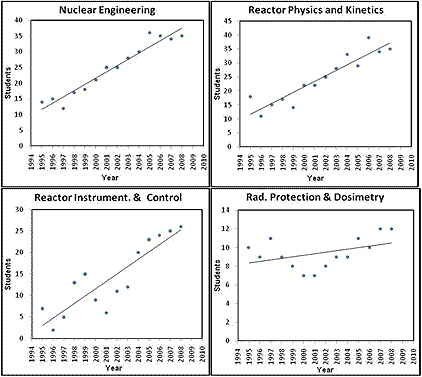
Figure 1: The increasing trend for nuclear education in Austria [5].
Most EU countries are experiencing a serious short-fall in the number of qualified nuclear personnel. There are now fewer nuclear education programmes offered at universities than ever before. Facilities and faculties offering nuclear E&T are ageing and the number of nuclear programmes on offer is declining. The number of nuclear-related degrees has also generally decreased and overall student perceptions of studying nuclear have been adversely affected by these “educational circumstances.” With an unclear vision of the future many young students now believe that job prospects are poor and that there is little interesting nuclear research going on. Low enrolment levels directly affect budgets, and budgetary cuts then limit the facilities available for nuclear programmes [7].
As an active promoter of nuclear education Europe has taken a wide range of measures. These include the development of nuclear educational programmes at universities/research institutes, enhanced exchange programmes for students and professors, and improving public information about nuclear at a European level. The establishment of ENEN is a major step forward for the promotion of nuclear E&T in the region [4]. Its main objective is the preservation and further development of nuclear expertise thanks to higher education and training. ENEN has designed a new qualification called the European Master of Science in Nuclear Engineering certificate (EMSNE) [4]. Education and training courses have been developed and delivered, within a European educational exchange system, to enhance the core curricula and increase the availability of optional fields of study.
Austria, as a member of the OECD, is actively contributing to nuclear education and training activities in Europe. The ATI is an energetic member of ENEN. By offering its nuclear E&T services ATI contributes to ENEN activities aimed at preserving, enhancing and managing nuclear knowledge. The ATI TRIGA research reactor, with its pulsing capabilities, is used as a university-level E&T tool. It offers a wide variety of practical exercises that no other European research reactor is currently carrying out on a regular basis. Here are some of the typical courses offered by ATI.
One of the first international training courses offered was the Eugene Wigner Course, which was established in 2005 as a multinational training course. For about 3 weeks, around 10 - 18 students were trained at the TRIGA reactor in Vienna, the training reactor at Budapest’s Technical University, and at the Vrabec reactor at Prague’s Technical University. Although these courses were very successful they were abandoned in 2008 due to financial problems.
In 2007, ATI signed a contract with the Nuclear Technology Education Consortium (NTEC) (www.ntec.ac.uk to deliver two one-week courses per year for six NTEC students. The course consists of 15 experimental exercises and the participating students receive credits from the University of Manchester.
The ATI also plays a role in the Integrated Infrastructure Initiative for Material Testing Reactor MTR+I3. This is an EU project under the European FP6 project. The key goal of MTR+I3 is to build a lasting cooperation between Material Testing Reactor (MTR) operators and relevant laboratories that can maintain European leadership with updated capabilities and competences regarding reactor performances and irradiation technology.
Within the network of MTR+I3 project ATI is an important partner, providing its nuclear E&T services for the benefit of the project. The TRIGA Mark II research reactor, with its 250 MW pulsing capability, offers a well-established course in reactor physics and instrumentation and control.
In 2009, another contract was signed, this time with the Belgian National Research Centre (SCK-CEN), to deliver seven one-week courses for about 40 reactor staff, in Mol (Belgium). They are offered as part of a commitment to regular retraining required by the Belgian Regulatory Authority. The practical exercises were chosen from a total of 20 exercises.
Another example of the support provided to EU countries is the training, since 2002, of operational staff at Bohunice NPP and Mochovce NPP. This regular training course is run by the ATI in co-operation with the Bratislava Technical University, in Slovakia.
Due to its close location to the IAEA headquarters, ATI has been offering nuclear E&T services to IAEA Member States (MS) for many years. Consequently, ATI has long-term experience in organising national and international training courses under the IAEA Technical Cooperation projects.
Most IAEA MS are facing potential demand for the recruitment of nuclear engineers and scientists. In other words, the development of nuclear technology requires and fosters human resource development (HRD). A continuous, consistent and well-managed HRD programme is crucial for each MS, in order to: 1). Assure continuity over time in providing the required capacities, skills and knowledge and 2). Establish and maintain a manpower pool that is trained in a variety of different nuclear-related areas and has been educated in nuclear-related fields.
An increasing number of MS request IAEA assistance to develop nuclear skills and resources in support of their developing national nuclear power programmes. Some of these MS are planning to construct a research reactor as a first step in the development of nuclear competence and infrastructure. For countries with little nuclear infrastructure, human resources and skills need to be developed to support planning, analysis, evaluation and other prerequisite activities involved in the related decision-making process and in subsequent projects. The Eastern European Research Reactor Initiative (EERRI) was approached by the IAEA to organise and implement a Group Fellowship Training Programme on Research Reactors (GFTPRR). Its purpose is to satisfy the increasing demand for the development of the aforementioned skills. The GFTPRR is offered to interested participants in the MS. The programme is organised in collaboration with the Vienna University of Technology/Atominstitute (VUT/ATI).
The first programme involves VUT/ATI, two Hungarian nuclear research institutes, and some staff members from the Jozef Stefan Institute (JSI), in Ljubljana, Slovenia. The training programme lasts for 6 weeks and covers about 30 topics, ranging from theoretical lectures to practical experiments with the TRIGA reactor Vienna and with the training reactor of Budapest Technical University. Training is provided in three main areas: organisational matters, research reactor operation & maintenance and radiation protection. Currently, the following institutes are involved in this project:
Vienna University of Technology/Atominstitute (VUT/ATI), Austria
KFKI Budapest, Hungary
Budapest University of Technology, Hungary
Jozef Stefan Institute, Ljubljana, Slovenia
Technical University of Prague, Czech Republic
Rez Research Centre, Czech Republic
The first course was completed, with great success, during six weeks in spring 2009. Demand to take part in the course was so high that since that initial course four more similarly structured courses have been offered with IAEA financial support.
Generally, the EERRI course starts at the IAEA Vienna and is followed by 3 weeks at the ATI along with guest lecturers from IJS. Then the trainees go to Budapest for 2.5 weeks of training and the course ends up with a few days spent at the IAEA for a course wrap-up. Follow-up courses offered vary slightly with regards to the time schedule, but the content remains the same.
Since 1984, ATI has provided training courses for the IAEA Safeguards Traineeship Scheme. Participants are selected by the IAEA from developing countries. These courses last for about 4 weeks and trainees undergo very intense theoretical and practical training. About 90 trainees from all over the world have completed ATI safeguard training courses since 1984.
Since the mid-1970s, ATI has been hosting IAEA fellows from all over the world to spend between two weeks and one year doing specialised training. The fellow is attached, according to his/her field of training, to a sepcific ATI working group. After an appropriate introductory period the trainee carries out his/her assigned task. More than 210 fellows have completed this ATI training course to date. In addition, long-term cooperation between the ATI and the fellow’s home institute has been established.
Experienced ATI staff members carry out IAEA expert missions at the request of IAEA MS. The mission covers a large range of expertise from radio-nuclide application to research reactor start-up and technical inspections. Since the late 1960s more than 200 expert missions have been performed by ATI staff members for African, Asian, Latin and South American countries.
Nuclear E&T is essential for the development and maintenance of continuous nuclear development and for contributing to the sustainable provision of human resources. It has been shown that the ATI conducts a wide range of nuclear E&T activities that contribute to international efforts aimed at addressing the concerns about the future of nuclear education. Here are some suggestions for improving nuclear E&T activities:
Experimental facility: The ATI reactor may have to return a few highly-enriched FLIP fuel elements to USA in the next decade, due to the USA’s “Spent Fuel Return Programme” policy. This return may put the future operation of this research reactor at risk, as there is presently no alternative to the fuel back-end. To keep this reactor in operation for research and E&T purposes, either the fuel return programme has to be extended or another solution for the TRIGA fuel back-end has to be found. Furthermore, future TRIGA fuel supply is not guaranteed as the producer has announced a potential end to TRIGA fuel production by end of 2011.
Scope of the course: Nuclear E&T programmes should be part of overall national E&T programmes and should be offered in every country and at various levels. The scope of the nuclear E&T programme is directly related to the national nuclear policy. Evidently, it would attract more students if there were a firm government commitment to consistent nuclear development.
Curricula: The curriculum of any academic programme is based on its quality. Nuclear E&T has to follow a firm quality assurance programme similar to that applicable to any product that plays an important role in industrial success. To maintain and further improve the quality of the product (or nuclear E&T), every industry (or educational institute, in this case) has to establish a quality management system. The most important factor in the quality of nuclear E&T is consolidated and standardised curricula for all academic programmes. To take up the challenge of offering top quality nuclear education, based on new, attractive and relevant curricula, higher education institutions should cooperate with industry, regulatory bodies and research centres. And more appropriate funding from public and private sectors must be made available.
Academic background of the candidates: Having candidates from a similar background taking part in a particular course generally results in its success. In the case of different backgrounds, common course contents should be designed taking into account the candidates’ different backgrounds. It is recommended for the candidates to have a good knowledge of basic nuclear physics and applied mathematics.
Prerequisites for participants (eligible criteria for attending courses): It is difficult for students to join a training institute directly if they don’t have a degree. A degree provides the student with the basic knowledge of general subjects (such as physics, mathematics and computer science etc.) that he/she needs. These subjects are prerequisites for doing the training. The educational institution, broadly-speaking, provides input to training institutions for certain specific subjects.
Course material: The course material (PPTs, CDs, notes) should be provided in advance so that students can prepare themselves for their course. This increases the student’s curiosity and, as a result, facilitates his/her retention power.
Harmonisation/integration: The integration of EU E&T is ongoing. A certain inefficiency of activities related to E&T in nuclear science area can be attributed to a lack of European integration and harmonisation of education and training activities. Thanks to a nuclear E&T programme the acceleration of the harmonisation process of European E&T would improve, in a more efficient and effective way, vital knowledge transfer.
Educational methodologies: New methods using the latest information and communications technology and the most appropriate software tools for nuclear E&T should be applied. These include virtual and e-learning, which apply the latest techniques in order to spread E&T activities worldwide.
Reference
R. Khan, H. Böck, Status and Patterns of European Nuclear Education and its Best Practices (ENS NEWS, Issue No. 23 winter, Feb. 2009).
Ph. Beeley et al., Nuclear Education, Training and Knowledge Management in Europe (ENS NEWS, issue no. 27 winter, 2010, www.euronuclear.org/e-news/e-news-27/hsc-statement.htm.
IAEA Technical Meeting on the Role of Universities in Preserving and Managing Nuclear Knowledge, 10-14 December 2007, IAEA HQ., Vienna, Austria.
European Nuclear Education Network (ENEN), www.enen-assoc.org/.
R. Khan, H. Böck, M. Villa, The Status and Patterns of Nuclear Education in Anti-nuclear Environment (International Journal of Nuclear Knowledge Management (IJNKM), Vol. 4, number. 3, 2010)).
H. Böck, R. Khan, Typical Experiments with Low Power Research Reactor, Vienna University of Technology/Atominstitute, ATIR 1008, Nov. 2010.
OECD publication, Nuclear Education and Training: Cause for Concern? (OECD/NEA, ISBN 92-64-18521-6. 2000).
H. Böck, et al., A multinational practical training course for nuclear candidate countries organized by EERRI, International Conference on Research Reactor Fuel Management, 22-25 March, 2009, IAEA, Vienna, Austria..
http://www.euronuclear.org/e-news/e-news-31/ats.htm

The need to educate a new generation of experts in the nuclear field became an urgent priority once the Finnish Government gave a favourable decision-in-principle to TVO’s application to build Olkiluoto 3 -nuclear power plant (NPP), which the Parliament ratified on 24 May 2002. Jukka Laaksonen, Director General of the Radiation and Nuclear Safety Authority (STUK), together with its former Director, Ami Rastas, (TVO), invited public and private organisations active in the nuclear industry to take part in a kick-off meeting, in October 2002, to discuss the organisation of a national nuclear training course. At the meeting Professor Riitta Kyrki-Rajamäki from Lappeenranta University of Technology (LUT) was elected Chairwoman of the organising committee.
The first “YK” course started in October 2003 and included 6 weeks of training based on IAEA safety course material, which was adapted to suit the Finnish context and needs. Since then, the course has been organised every winter, between October and March, at a time when there are no outages at any Finnish NPPs.
The lecturers come from the participating organisations, which earn seats on the course based on their contribution to the course’s organisation. Over the years, LUT has managed the course. The 8th YK course is now under way and to date almost 500 people have participated. The focus of the lectures has changed over time to take more account of new build. The course has also been shortened to 21 days, organised within 6 time periods, partially in response to course evaluation and feedback from participants.
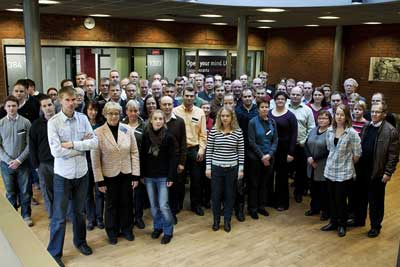
Participants in the 8th YK course at Lappeenranta University of Technology (photo by Timo Mikkola, LUT).
Different nuclear waste management operators in Finland have traditionally educated and trained their experts' themselves. Therefore, the need for a more national training course in this area was clear. In 2008, Jaana Avolahti, from the Ministry of Employment and Economy (MEE), together with Kaisa-Leena Hutri from Radiation and Nuclear Safety Authority (STUK) and Marjatta Palmu, from the waste management company Posiva Oy, created a national training course for post-graduat students and young engineers. It was part of the Finnish research programme on nuclear waste management (KYT) (For more information, visit: www.ydinjatetutkimus.fi).
Professor Jussi Leveinen and Mira Markovaara-Koivisto, from Aalto University, joined the team and the first pilot course took place at Aalto University, in Espoo, in December 2010. It focused on four main topics: the nuclear fuel cycle and radioactive waste, the principles of waste management, the management of operational and decommissioning waste and the final disposal of spent fuel. Technical visits to research laboratories dedicated to nuclear waste management and to the research reactor (FIR) at the Technical Research Centre of Finland (VTT), at Otaniemi (in Espoo) were also included in the course. The lecturers and 20 participants in the pilot course came from Finnish public and private organisations working in waste management. The first course was two and a half days’ long, but it will be expanded to 5 days in 2011. (Source: an article by Mira Markovaara-Koivisto et al, will be published in the ATS’ Ydintekniikka magazine, N:o 1/2011
(www.ats-fns.fi/eng/quarterly/editorial.html ).
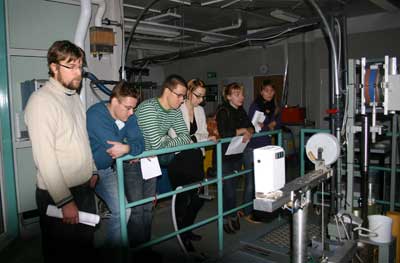
Participants visited VTT's FIR research reactor, in Otaniemi.
In November 2010, in Säätytalo, Helsinki, ATS Seniors and ATS Young Generation organised a joint seminar on the topic of atomic power in Finland. The purpose of the seminar was to highlight the history and development of nuclear power in Finland in the 1960's and 1970's. It also aimed to help transfer knowledge from the older to the younger generation. This is especially important when you consider that an increasing number of the experts in Finland have retired or will be retiring soon. About 80 senior experts and YG engineers participated in this one-day seminar. The programme covered the first steps that were taken in Finland, mostly in 1960's and 1970's, to prepare for country's first NPPs. These steps included doing the groundwork to provide for the education of nuclear engineers, early nuclear energy legislation and creation of an independent nuclear safety authority. Other presentations included Finnish industry's contribution to the first NPPs in Finland and the current situation with regards to education, research, and regulatory guidelines in Finland.
The seminar started with a presentation by Academy member and ex-Director General of VTT, Pekka Jauho. He spoke about the very first days of atomic power in Finland, leading eventually to the construction of the subcritical pile and TRIGA Mark II research reactor (FI R1), in Otaniemi (Espo). Seppo Salmenhaara continued the story of the FIR1 research reactor, describing its purchasing and the first years of its operation. Jorma Aurela, from the Ministry of Employment and Economy (MEE), described the status of nuclear education and research in Finland today. Juhani Santaholma (ex-President of Finenergy), Antti Vuorinen (ex-Director General of STUK) and Pekka Salminen (STUK) gave an overview of the development of nuclear law and other related legislation, and spoke about important international agreements and of the start-up of regulatory and supervisory activities. Tapani Graae continued with a presentation about the achievements of the Finnish industry in the 1960's and 1970's with the construction of components and systems for nuclear power plants.
The seminar ended with a panel discussion with senior and young participants about efficient knowledge transfer and the future of nuclear power. All the presentations are available on the ATS web-site, in Finnish (www.ats-fns.fi/info/arkisto.html).
http://www.euronuclear.org/e-news/e-news-31/spain.htm

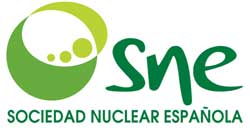
The construction of the European Higher Education Area (EHEA) received a decisive boost when the Declaration of Bolonia was signed on June 19, 1999 by the Ministers responsible for Higher Education in 29 European countries, thereby giving its name to the Bologna Process. It is an inter-governmental process involving the participation of universities, students, the European Commission and other organisations. The goal of the process was to establish the European Higher Education Area in 2010.
The objective of EHEA is not to standardise higher education systems, but rather to increase the degree of compatibility and comparability between them, while respecting their differences. The construction of EHEA is based upon agreements reached and commitments made about the objectives that have to be met. EHEA is designed to be an “open space” in which there are no obstacles to the mobility of students, degree holders, professors or administrative staff. It is based on the reciprocal recognition of degrees and other higher education qualifications, transparency (a system of understandable and comparable degrees organised in three cycles), and European cooperation in quality assurance.
University studies in Spain used, traditionally, to be divided into diploma and degree courses. Diplomas, three-years long, provided a specialised education needed to enable one to carry out mid-level tasks. Degrees, five or six years long, provided a very general education initially, with specialisation occurring in the later years of the course. Although the possibility to continue studying from a diploma to a degree level existed, this was not often done because it was very difficult to get access to the courses needed to allow such a transition to take place. On the other hand, master classes were not officially taught because a professional qualification was given upon completion of the degree course. Master courses, especially in the area of economics and business studies, were considered to be specialised training, similar to that of an American MBA, but without the official recognition that follows.
Adaptation to the EHEA has transformed this type of structure to the new one established across Europe, i.e. graduate, postgraduate and doctorate studies, with the possibility of natural transfer between them. This has involved the transformation of traditional education systems where technical schools used to offer three-year degree courses and higher educational establishments offered the five and six-year courses.
Over the last decades, due to the nuclear moratorium that was imposed worldwide and also in Spain after the TMI and Chernobyl accidents, the number of undergraduate and graduate courses in nuclear science offered progressively declined on account of dwindling demand for engineers and professionals in the energy sector.
Today, we can say that this trend is over and, to prove it, there now exist in our country a considerable number of master's degrees related to nuclear energy. Some of them are 100% nuclear-related, covering a wide range of nuclear engineering applications, e.g. from current reactor technology to advanced ones currently under development, projected energy generation from fusion, nuclear waste management or treatment by transmutation. Other masters degrees are more general, training students to become professionals in various types of power generation (not only in nuclear), with the job market ultimately deciding his/her future career orientation. Some are specifically geared to power generation from renewable energy sources. Nuclear generation has been included as one of these sources, which enable mankind to develop in a sustainable way. (See table 1)
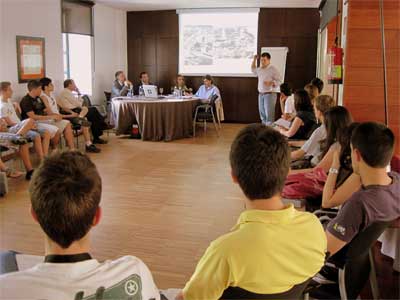
The SNE has always promoted the training of its members through various mechanisms. With regards to financing, it supports 5 scholarships for postgraduate studies in nuclear science every year. It also invites students to submit their work in a competition to see who wins a prize for the best “End of Degree project/dissertation”.
The SNE also contributes to the education of its members through the organisation, in collaboration with various universities, of joint conferences and debates for students on nuclear issues.
Nuclear Youth give talks and seminars on nuclear issues, which can also be seen as part of their training. Finally, in order to advertise existing masters and postgraduate courses, SNE dedicates every year an issue of Nuclear España to this topic. A list of the courses is also published on the web. Table 1 illustrates the interest that universities and other institutions in Spain are showing in the nuclear sector.
Nuclear Science and Technology |
Universidad Politécnica de Madrid |
Electric Power Generation Technology |
Tecnatom |
Nuclear Engineering and Applications |
Ciemat |
Industrial Safety and Environment |
Universidad Politécnica de Valencia |
Energy Technology for Sustainable Development |
Universidad Politécnica de Valencia |
Energy Engineering |
Universidad Politécnica de Cataluña |
Nuclear Instrumentation Technology |
Universidad de Huelva |
Sustainable Energy Engineering |
Universidad del País Vasco |
Nuclear Fusion Science and Engineering Physics (Erasmus Mundus) |
Universidad Complutense de Madrid |
Energy Engineering |
Universidad Politécnica de Madrid |
Power generation, promotion, technology and operation |
Universidad Pontificia de Comillas |
Table 1: Spanish nuclear-related masters courses
http://www.euronuclear.org/e-news/e-news-31/sfen.htm

One of the key missions assigned to the French Nuclear Energy Society – Young Generation Network (SFEN-JG) is to develop a strong relationship with students. In order to achieve this, specific actions aimed at students are undertaken.
Our main activity with regards to students is to visit them at their university or engineering schools. We come to them with a couple of alumni and present them our industry and the jobs that it offers. First, we present energy demand in the world and explain the role that nuclear plays. This enables us to underline the growth of our industry, detail the numerous opportunities available in the industry and explain how it will offer jobs for a long time to come thanks reactor lifetimes of 60 years. Next, we briefly describe the SFEN-JG: its goals (providing information and developing the acquisition of knowledge) and its actions (visits to facilities, participation in job fairs, interviews of top executives etc.). Finally, we let the alumni take the floor and generate a lively, interactive debate. Describing their current positions, they show that even though they took the same classes, they now hold very different positions. Students are very demanding when it comes to receiving information and, for instance, these meetings can help them to choose between carrying out research or a job in industry. They help to decide whether or not a PhD is necessary in order to get the job of their dreams. It’s also important to mention the numerous questions that asked about the importance of gaining an international experience. By answering such questions, the alumni help students to make the choice that will later determine their career path.
In 2010, several engineering schools were visited (Chimie ParisTech, Master ITDD, etc.). SFEN-JG was also involved in international events, such as AtomiCareers in Bruxelles, in which ENS-YGN was also involved. This kind of activity is strongly supported and is key for the growth of our network.
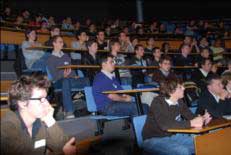
Students from Lille attending a presentation from SFEN JG members
To support those debates, SFEN-JG relies on the testimonies of more than 60 professionals, which are available on our website. This initiative is based on the same principle: nuclear employees summarise their job and explain what makes it interesting. The testimonies cover most topics (chemistry, materials science, neutronics, etc.), involve the participation of French companies like AREVA, CEA,, GDF SUEZ, EDF, ONET Technologies, etc., and take place in Paris, the South of France, etc. Once again they are very useful tool for students to get a good global overview of what their career option could be.
In addition to these specific activities targeting engineering schools, we also make all SFEN-JG activities open to students. This provides a good opportunity to encourage an exchange of ideas, a melting pot for young professional and students. Technical tours and visits of NPPs or factories are one of the main tools for establishing this contact. As with all practical activities, they offer an easy way of introducing the subject, especially because young people do not have numerous opportunities to visit such facilities. Such visits provide an invaluable opportunity to present our industry and to answer all the questions that have occupied their minds for a long time, such as: How much power can you get from uranium? Is nuclear energy safe enough? What are the dangers of radioactivity? What is the difference between a nuclear reactor and a bomb? These questions are raised whatever the kind of facility visited and students can get the answer straight from the specialists. The visits also help present all the aspects of our industry. Indeed, whatever part of the fuel cycle you discover, it cannot work without the other parts: enrichment needs a mine, power plant needs the enrichment facility and requires fuel reprocessing if we want to close the cycle. Consequently, young visitors come to realise how broad-based the nuclear industry is and discover the very numerous jobs that it can offer them.

Students and young professionals from SFEN-JG visiting an AREVA Factory in Chalon
In order to complement these day-to-day activities, we also strengthen our relations with students through the work of student committees. These are regional groups that gather together students from universities and engineering schools. They are active all year long, organising the same kind of activities: visits, conferences, debates, presentations at job fairs, etc. Furthermore, every year they organise a national event that mobilises 200 students from all engineering schools and focuses on a specific theme.
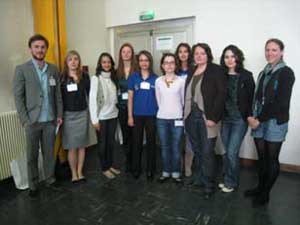
2010 Event organisation team
For instance, in 2010, it was called "Nuclear in our everyday life" and presented all the applications of nuclear energy from electricity to medicine, including the role of women in the industry. Because their activities are mostly local we provide them with strong support in finding speakers for conferences, sponsors, and help them to get contacts for tour facilities so that they can gain national visibility.
Eventually, let's say that many of our actions are oriented towards the future generation and that we see the results of these efforts when many young people join our network!
Hélène Lefaix and Etienne de Villèle for the SFEN-JG. www.sfenjg.org
http://www.euronuclear.org/e-news/e-news-31/slovenia.htm

The international conference Nuclear Energy for New Europe 2011, which will take place in Bovec, Slovenia, from 12 – 15 September, will be the latest edition in a long series of annual conferences aimed at bringing together professionals from the nuclear research sector and educational institutions, as well as representatives of nuclear utilities and regulatory bodies from Europe and beyond. The 2011 conference, the twentieth in all, will return to its roots: Bovec was the venue of the very first conference, back in June 1992.
Over the years, the conference has become more and more interesting for nuclear professionals and has gained a broad international following. Also, to encourage and motivate young nuclear professionals, a “young author award” is presented every year. In 2010 Laure Lizon-A-Lugrin won the award (see photo below).
The following broad range of topics will be discussed during the conference: nuclear energy in the 21st Century, reactor physics, thermal hydraulics, probabilistic safety analysis and severe accidents, research reactors and nuclear methods, nuclear fusion, nuclear power plant operation, materials in nuclear technology, regulatory issues and legislation, radioactive waste, education, training and public information etc.
We would like to invite all enthusiastic candidates to share their knowledge and the results of their work with participants in the conference. More information about the conference is available at: www.nss.si/nene2011
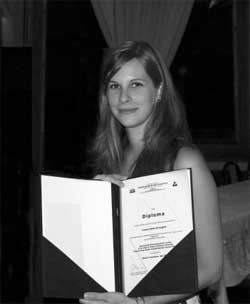
Young Author Award 2010: Laure Lizon-A-Lugrin
http://www.euronuclear.org/e-news/e-news-31/real-life.htm
Name: |
Elena Tamaseviciute |
Age: |
23 |
Nationality: |
Lithuanian |
Study course: |
2nd year of a Master of Science in Nuclear Engineering |
University |
University: École Polytechnique Fédérale de Lausanne (EPFL) and Swiss Federal Institute of Technology, Zurich (ETHZ) |
Target degree: |
Master of Science in Nuclear Engineering |
Career aspiration: |
To become a highly qualified specialist in the field of nuclear engineering |

Elena Tamaseviciute (ET): The second unit of the Ignalina Nuclear Power Plant was closed at the end of 2009, but in the future Lithuania is planning to build a new, safer nuclear reactor. There is, therefore, an increasing demand for highly-qualified specialists in the field of nuclear engineering. Lithuanian universities have already started to offer study programmes such as Physics of Nuclear Energetics, but there is no doubt that the École Polytechnique Fédérale de Lausanne (EPFL) and the Swiss Federal Institute of Technology Zurich (ETHZ) have much more experience in offering high-quality specialised education. When choosing a university, I thought that it would be extremely valuable for me to have some experience with the „zero power“ research reactor – CROCUS – at the EPFL, as it offers a unique possibility to see how a real reactor works. The fact that all the professors – Prof. Rakesh Chawla, Prof. Minh Quang Tran (EPFL), Prof. Wolfgang Kröger and Prof. Horst-Michael Prasser (ETHZ) – are active in scientific research is also very impressive.
ET: The main reason for choosing nuclear science was that I believe that nuclear energy will be essential for meeting rapidly increasing energy demand and having a Master of Science in Nuclear Engineering gives me a good chance to find an opening in the nuclear industry, for example to take part either in the Ignalina Nuclear Power Plant decommissioning process or in building a new nuclear reactor (plans for this are unfortunately stopped at present) - or to find a job somewhere in Europe.
ET: As I was particularly interested in nuclear waste management, there were basically two attractive options for me: to stay in Switzerland and apply to the Swiss National Cooperative for the Disposal of Radioactive Waste (Nagra) or to approach the Lithuanian state enterprise Radioactive Waste Management Agency (RATA). There were two internship offers from Nagra on the website of the ETHZ Laboratory of Nuclear Energy Systems and I chose to gain my experience in Switzerland. Now, after my time at Nagra, I can say that I really chose the perfect place to do my internship.
ET: The internship lasted 3 months. My responsibilities included the development of Monte Carlo transport code (MCNP) models for spent fuel disposal containers, the co-development for other storage containers and NPP buildings, SF burnup calculations and the application of CorelDrawX4.
ET: I obtained a good insight into and experience of some essential nuclear calculation tools and also other work-related tools. I had the chance to follow a small project from the beginning (problem definition, etc.) up to the very end (writing a report). I also took part in the daily work of a company active in the nuclear industry, meeting the pressure of deadlines, daily routine and so on. I believe that an internship is essential for students as it gives the possibility to deal with real problems - a taste of real life – rather than just sitting at university and trying to solve problems from a book.
ET: The last semester of my studies at university will start soon, during which I have to write my Master’s thesis. It would be very interesting and useful for me to continue at Nagra with a thesis subject that builds on my previous experience. It should be more challenging than my internship because of the complexity of the tasks involved and more demanding in terms of using my own initiative and responsibility to reach a successful solution.
ET: After graduating from university, I would like to apply for a PhD position somewhere in Europe, preferably in Switzerland.
Nagra policy: Opportunities for Nuclear Education and Training – aims and infrastructure
What type of work will be expected?
What is the benefit for the candidate?
What is the benefit for the company?
Contact: |
http://www.euronuclear.org/e-news/e-news-31/Member-Societies.htm

Austrian
Nuclear Society |
Belgian
Nuclear Society |
Bulgarian
Nuclear Society |
Croatian
Nuclear Society |
Czech Nuclear Society |
Finnish
Nuclear Society |
French
Nuclear Energy Society (SFEN) |
German
Nuclear Society (KTG) |
Hungarian
Nuclear Society |
The
Israel Nuclear Society |
Italian
Nuclear Association |
Lithuanian
Nuclear Energy Association |
Netherlands Nuclear Society |
The Nuclear Institute |
Nuclear
Society of Russia |
Nuclear
Society of Serbia |
Nuclear
Society of Slovenia |
Polish
Nuclear Society |
Romanian
Nuclear Energy Association (AREN) |
Slovak
Nuclear Society |
Spanish
Nuclear Society |
Swedish
Nuclear Society |
Swiss
Nuclear Society |
http://www.euronuclear.org/e-news/e-news-31/Corporate-Members.htm
Links to ENS Corporate Members |
AF-Colenco Ltd., Nuclear Technology
Department |
Alpiq Ltd |
Alpiq Suisse Ltd. |
Andritz AG |
Ansaldo Nucleare S.p.A |
AREVA NP |
AREVA NP GmbH |
Atomtex SPE |
Atomic Energy Council (AEC) |
Axpo AG link |
BKW FMB Energie AG |
Centralschweizerische Kraftwerke (CKW) |
Chubu Electric Power Co. |
Chilean Nuclear Energy Commisssion |
CCI AG (formerly Sulzer Thermtec Ltd) |
Design Bureau "Promengineering" |
NV Elektriciteits-Produktiemaatschappij Zuid-Nederland EPZ (Electricity
Generating Co. Ltd in the Southern Netherlands) |
E.O.N Kernkraft GmbH |
Euro Nuclear Services BV |
Electrabel, Generation Department |
Electricité de
France (EDF), Communication Division |
ENUSA Industrias Avanzadas SA |
EXCEL Services Corporation |
GE Nuclear Energy |
IEA of Japan Co. Ltd |
Japan Electric Power Information Center (JEPIC) link |
Kernkraftwerk
Gösgen-Däniken
AG |
Kernkraftwerk Leibstadt AG (KKL), |
Elektroinstitut Milan Vidmar |
L-3 Communications MAPPS Inc. |
| NRG Arnhem link |
NRG Petten link |
NUKEM Technologies GmbH |
ONET TECHNOLOGIES |
Paks Nuclear Power Plant Ltd |
Paul Scherrer Institute |
Polimaster Ltd |
|
Siempelkamp Nukleartechnik GmbH |
SKB (Swedish Nuclear Fuel and Waste Management Company) |
Studiecentrum
voor Kernenergie, Centre d’Etude de l’Energie
Nucléaire SCK/CEN |
Synatom |
Taiwan Atomic Energy Council (AEC) |
Taiwan Power Company (Taipower) |
"Technoatomenergo" Close
Joint-Stock Company |
Teollisuuden Voima Oyj / Industrial Power Company Ltd (TVO) |
Tokyo Electric Power Co. (London Office) |
Tractebel Engineering S. A. |
UNESA |
Urenco Limited |
USEC Inc. |
Vattenfall AB |
VTT Nuclear |
Westinghouse Electric Company link |
World Association of Nuclear Operators (WANO), |
|
http://www.euronuclear.org/e-news/e-news-31/editorial.htm

Editorial Staff:
Mark O’Donovan, Editor-in-Chief
Contributors to this Issue:
Daniela Baldova (YGN Czech Republic)
Thomas Berkvens (SCK-CEN)
Jan Blomgren (Vattenfall)
Helmut Böck (Vienna University of Technology/Atominstitute)
Tomas Bily (YGN Czech Republic)
Kevin Boram (EDF Energy)
Michèle Coeck (SCK.CEN)
Kirsten Epskamp (ENS)
Jean-Claude Gauthier (ENELA)
Jaana Isotalo (TVO)
Emilia Janisz (ENS)
Hélène Lefaix (SFEN-JG)
Olivier Lefebvre (YGN Belgium)
Martina Mala (YGN Czech Republic)
Marija Miletic (YGN Czech Republic)
Siegurd Möbius (Karlsruhe Institute of Technology)
Christof Paulischta (Westinghouse)
Bea Riecken (NUKEM Technologies GmbH)
Serge Runge (AREVA)
Georges Servière (EDF)
Vladimir Slugen (ENS)
Elena Tamaseviciute (EPFL and ETHZ)
Adrew Teller
Etienne de Villèle (SFEN-JG)
Realisation:
Marion Brünglinghaus
Rue Belliard 65, BE-1040 Brussels
Phone +32 2 505 30 50 - Fax: +32 2 502 39 02
E-mail: info@euronuclear.org - http://www.euronuclear.org
The ENS News is a quarterly publication, in electronic
form only.
Copyright notice ©2011 European Nuclear Society.
Reproduction is authorised provided that the ENS News is acknowledged as the
source – except where otherwise stated.
![]()
© European Nuclear Society, 2011